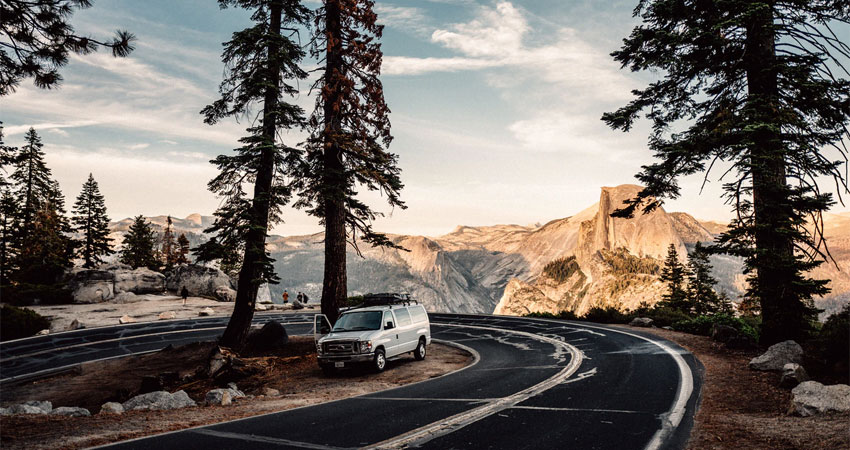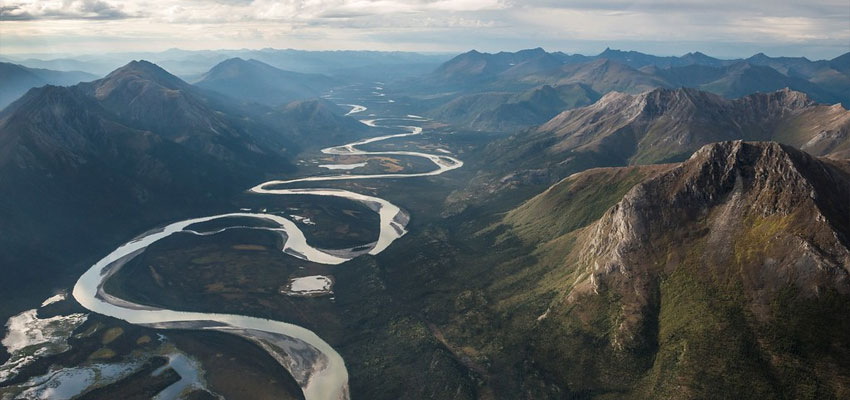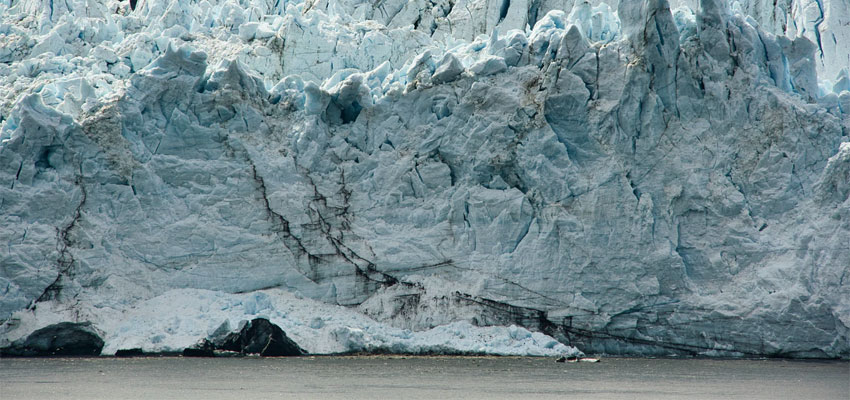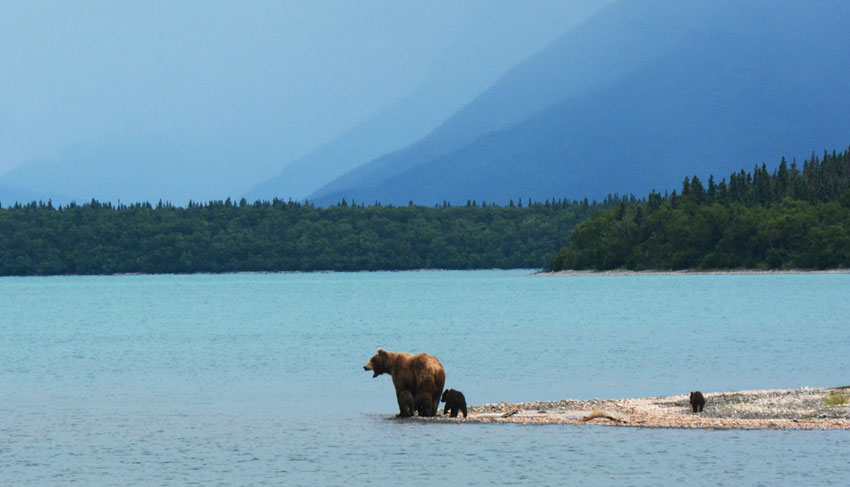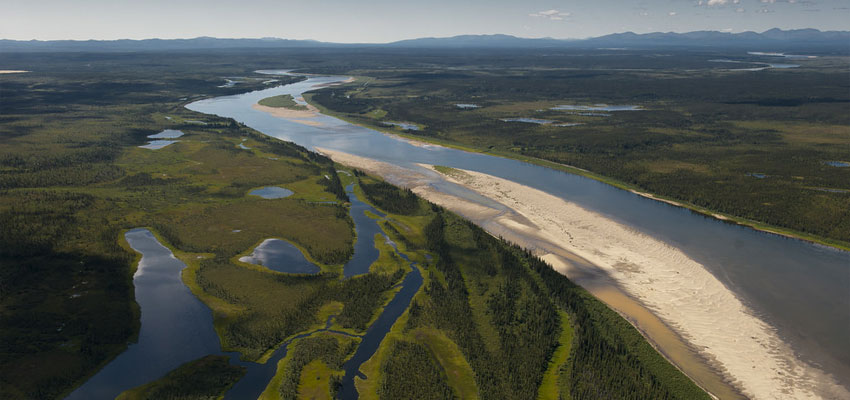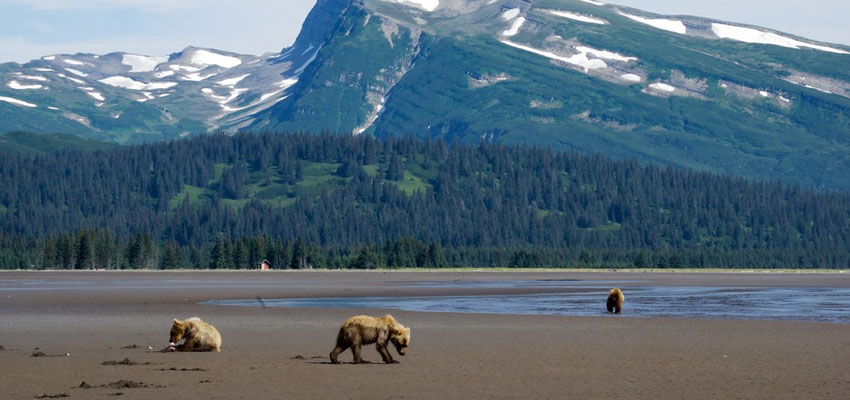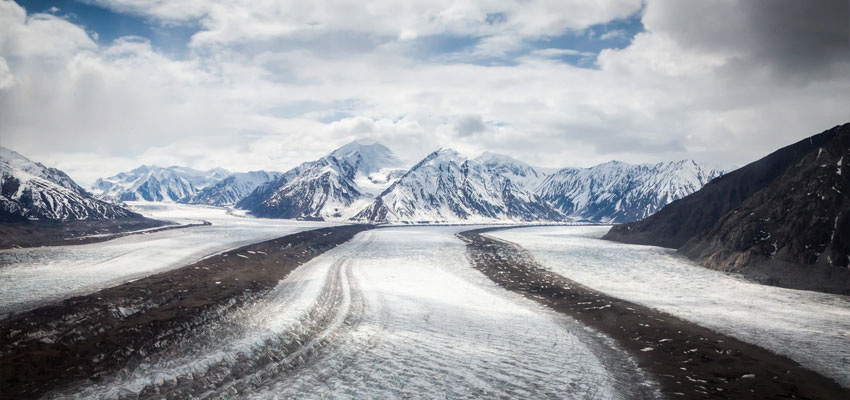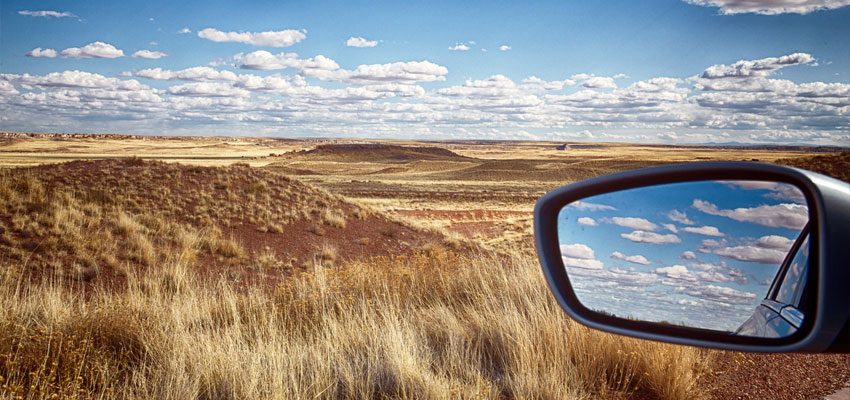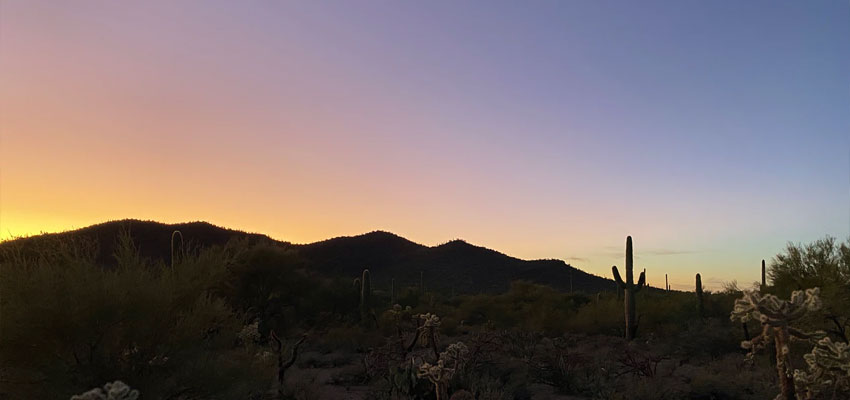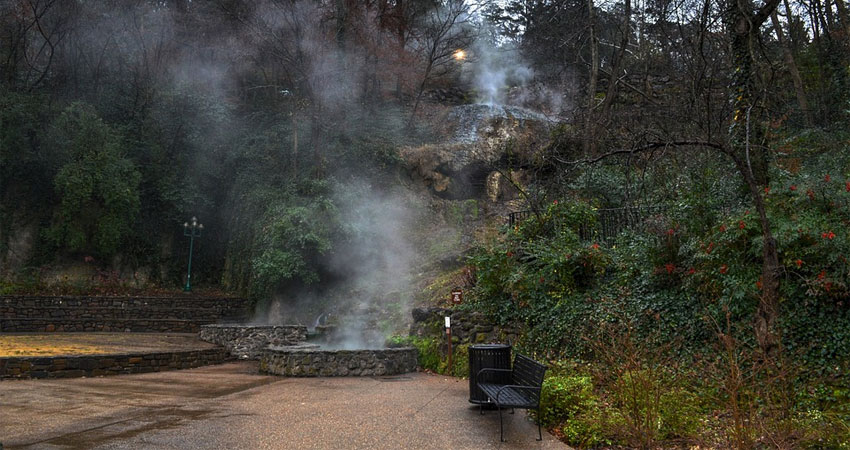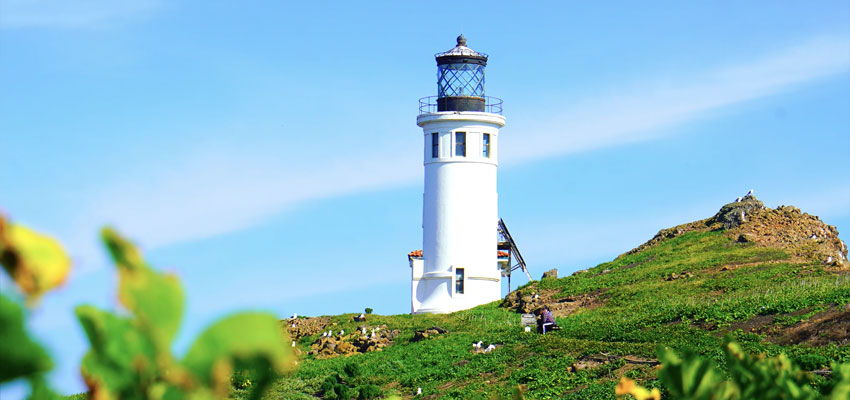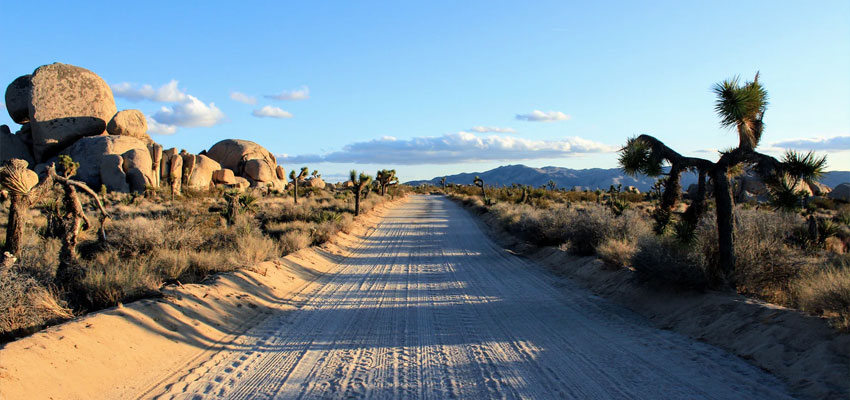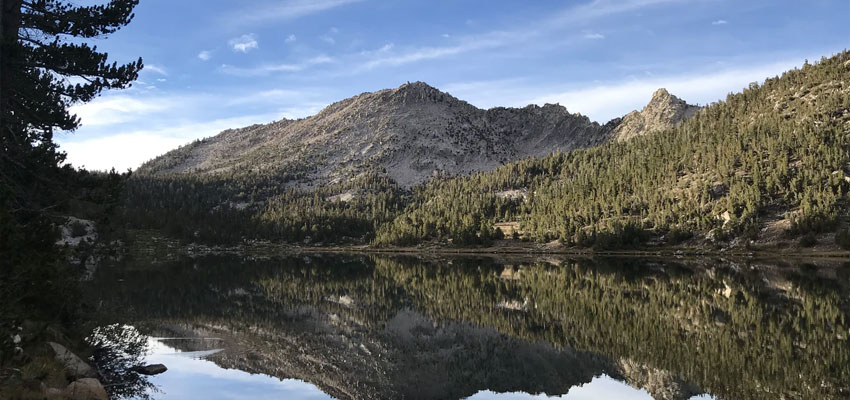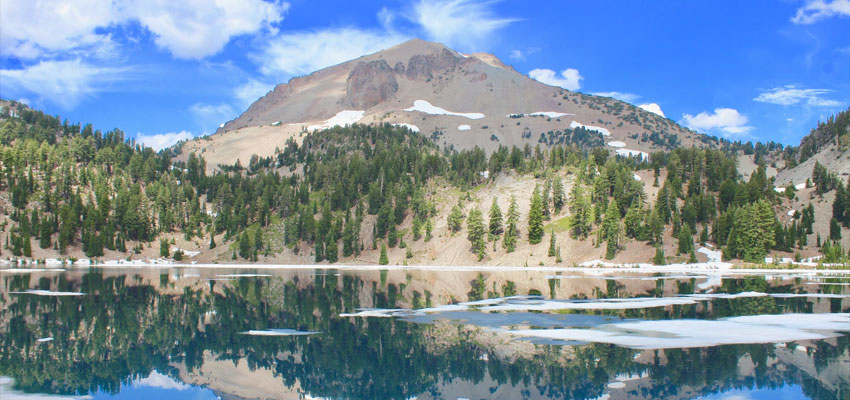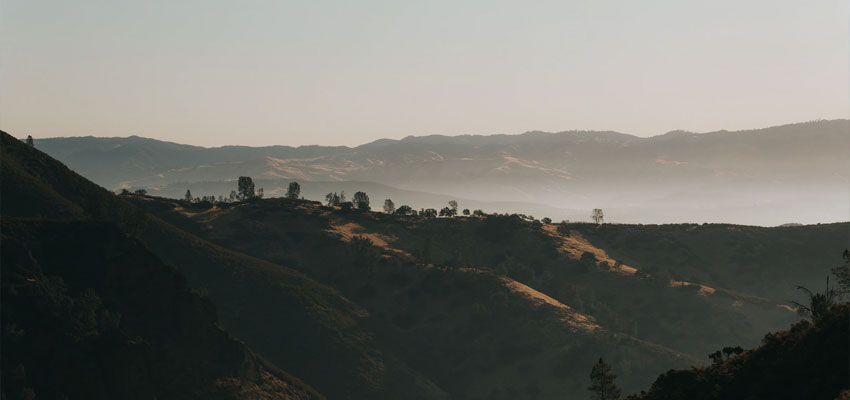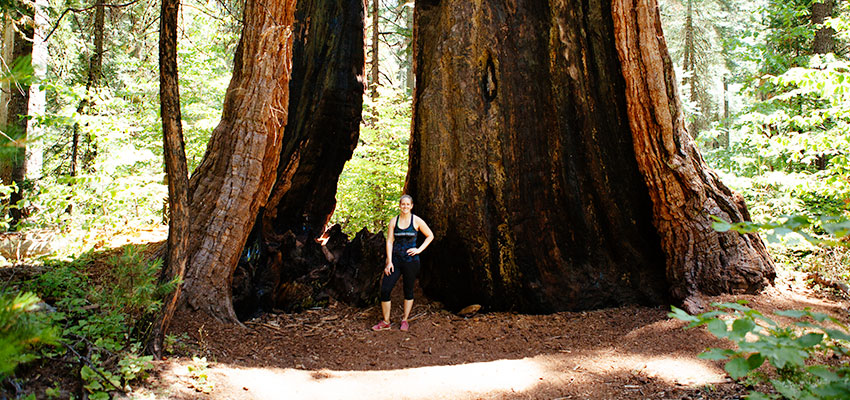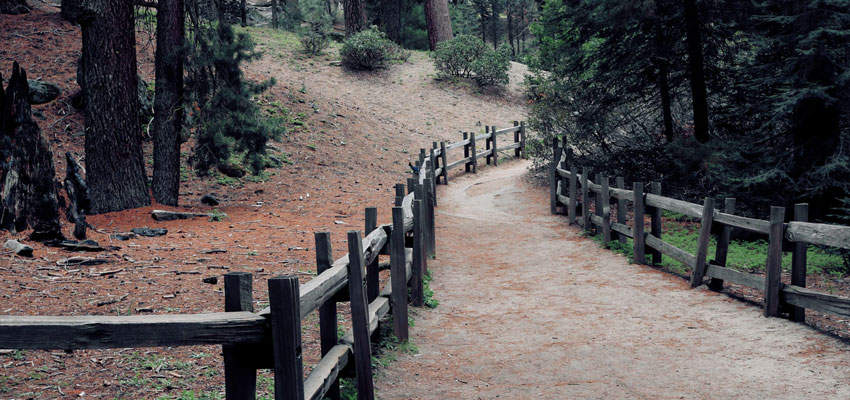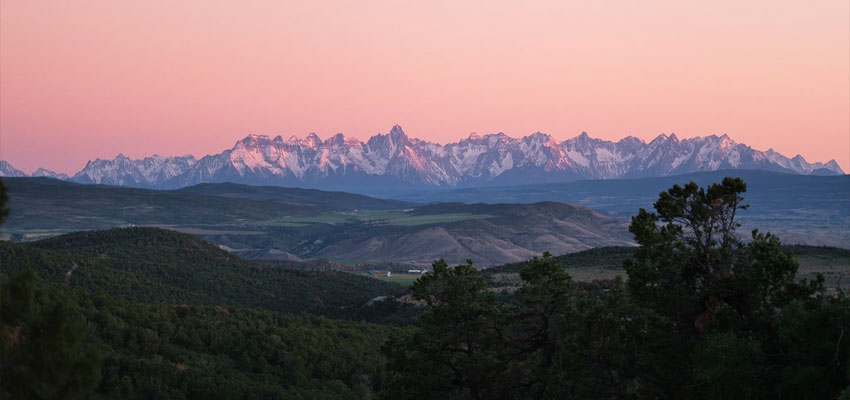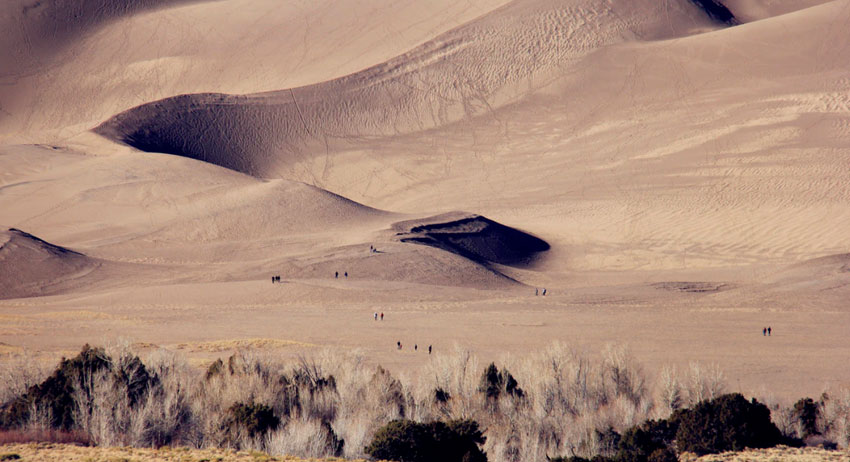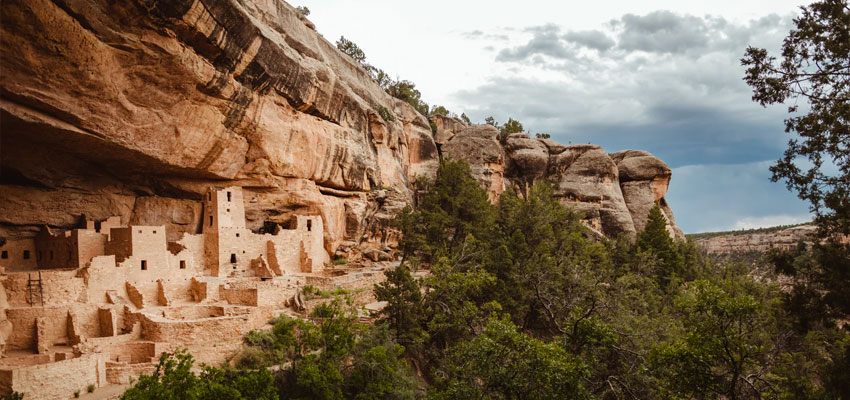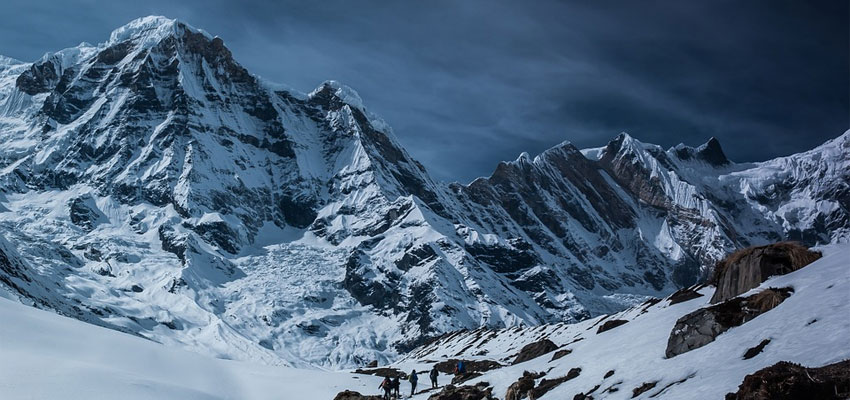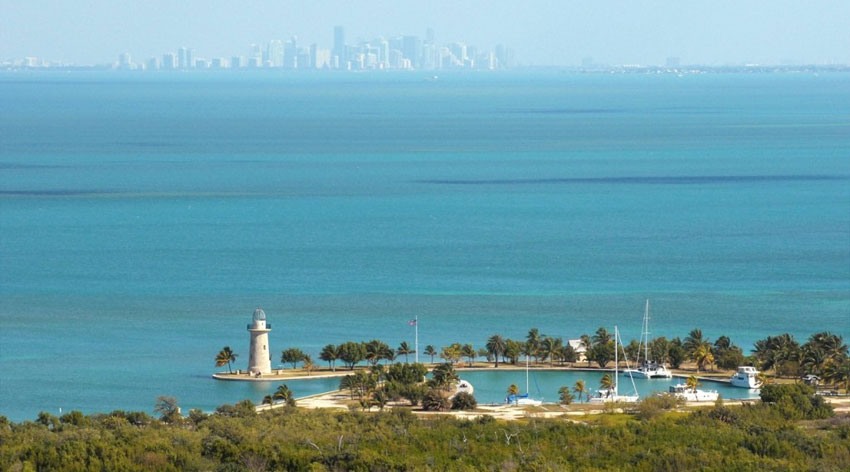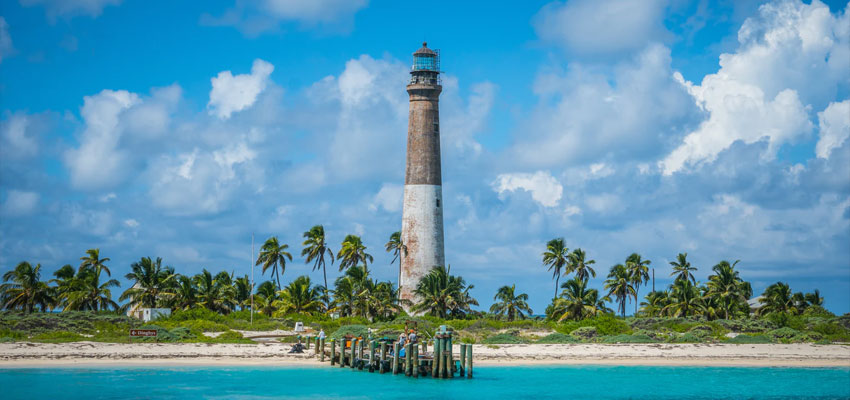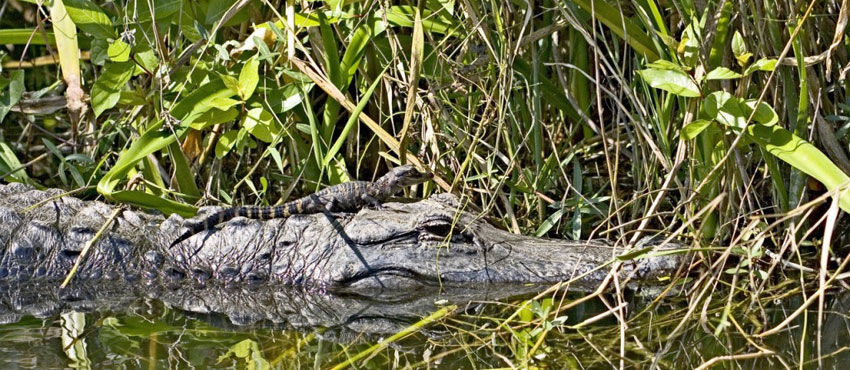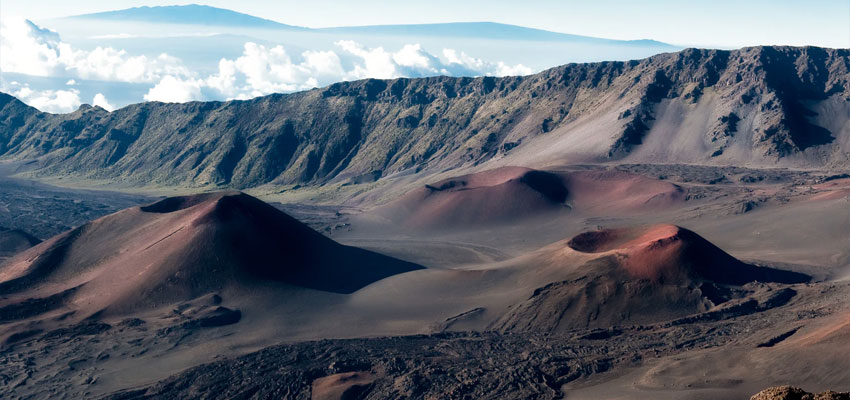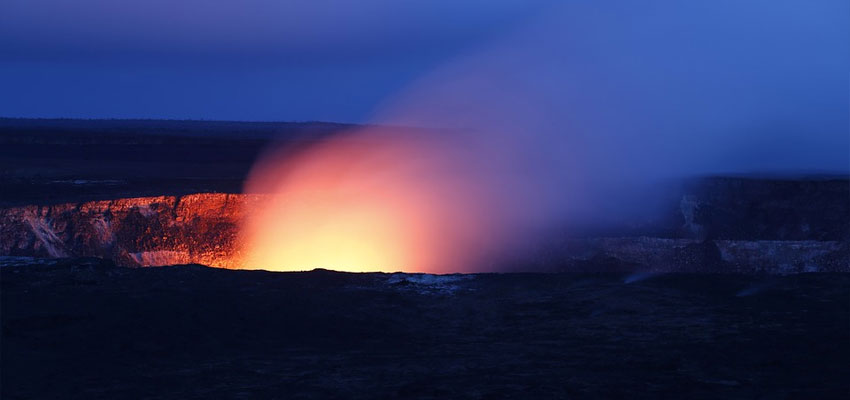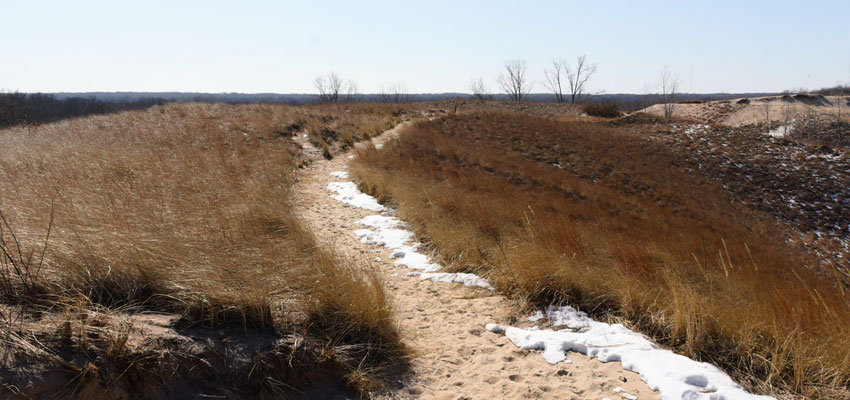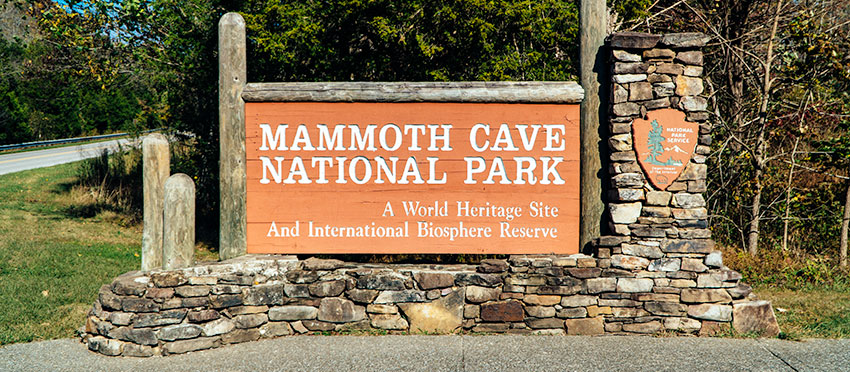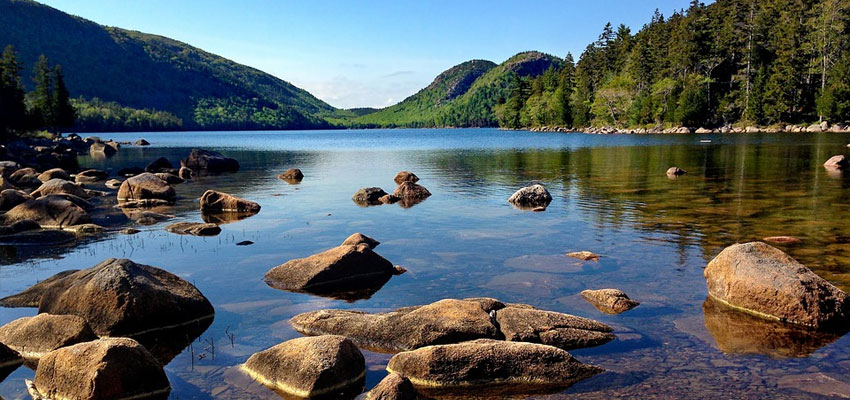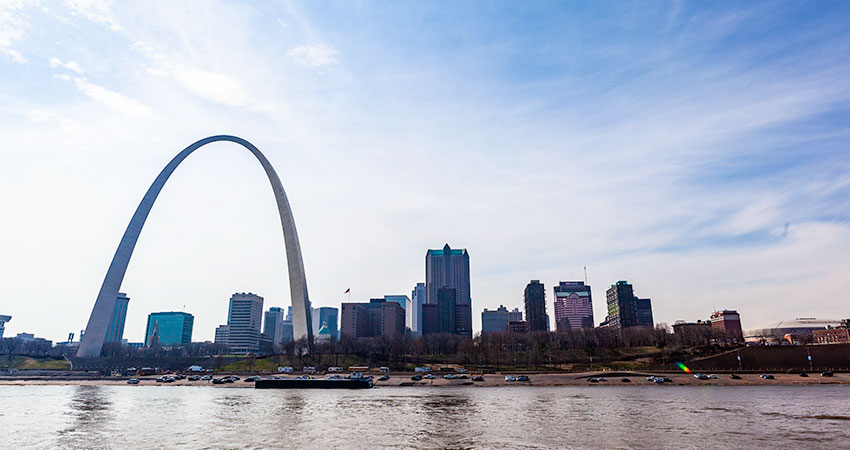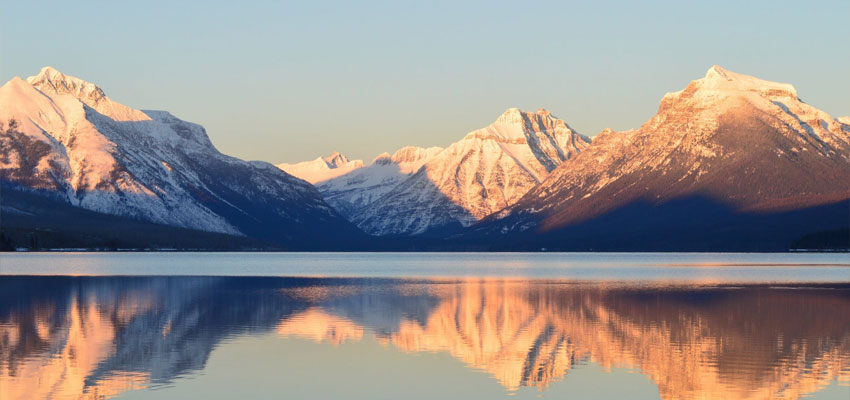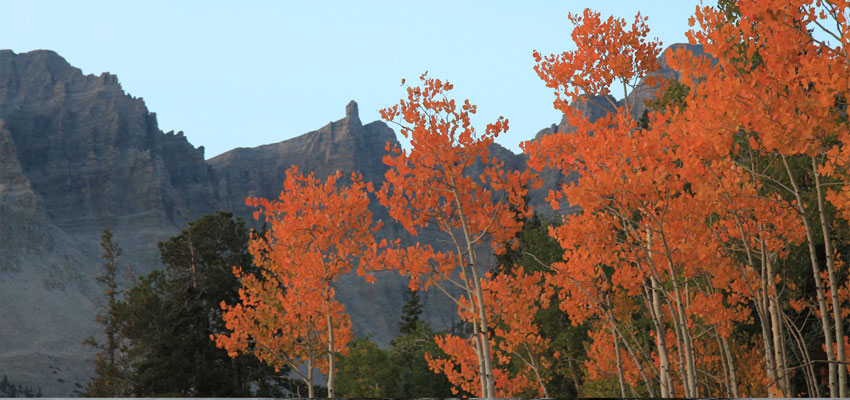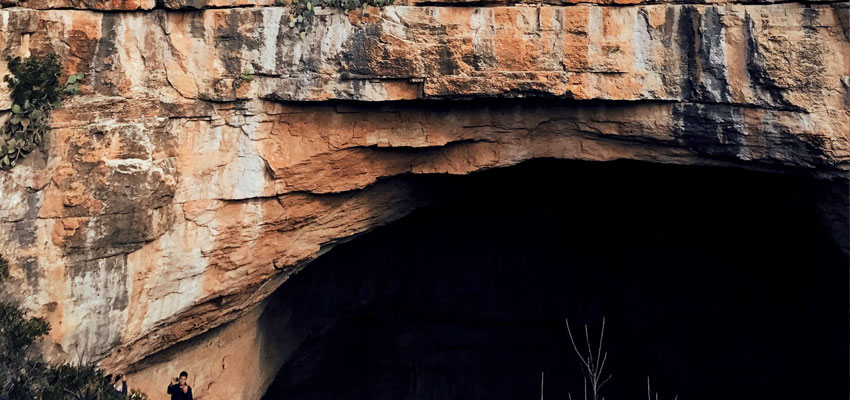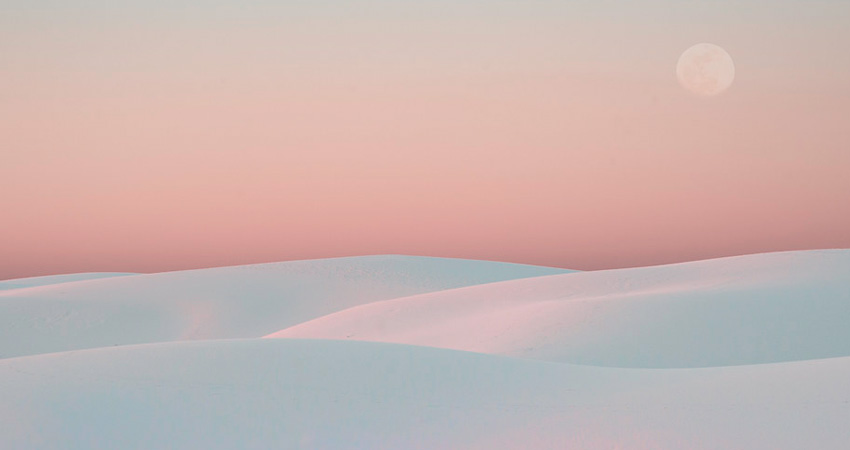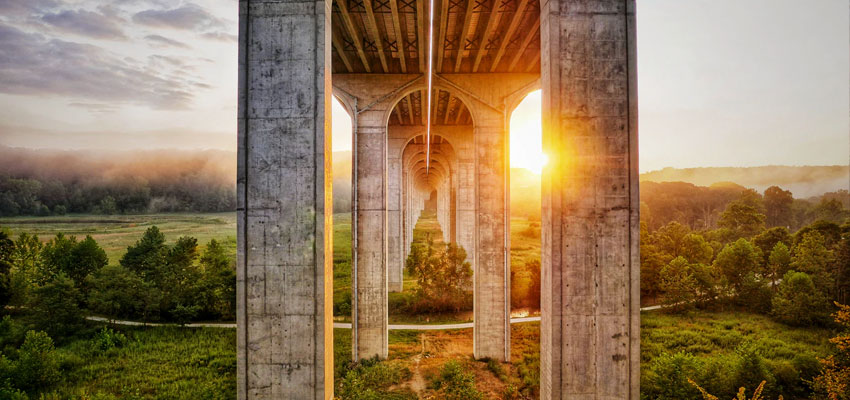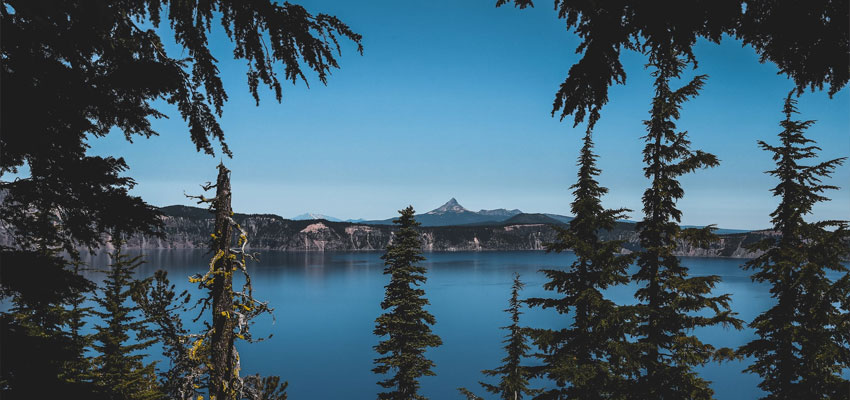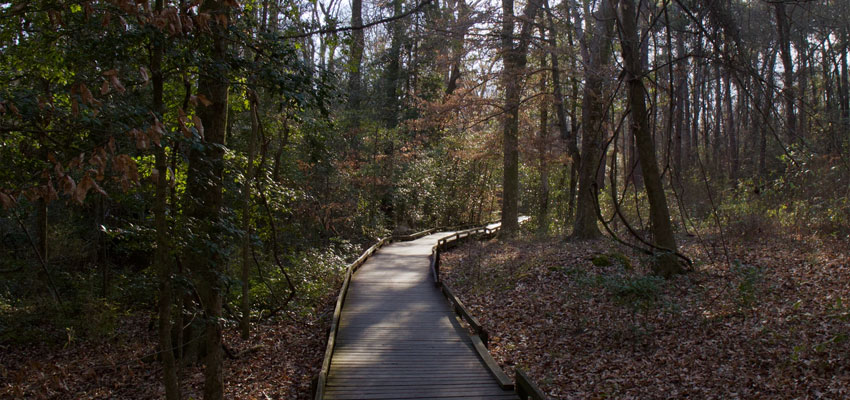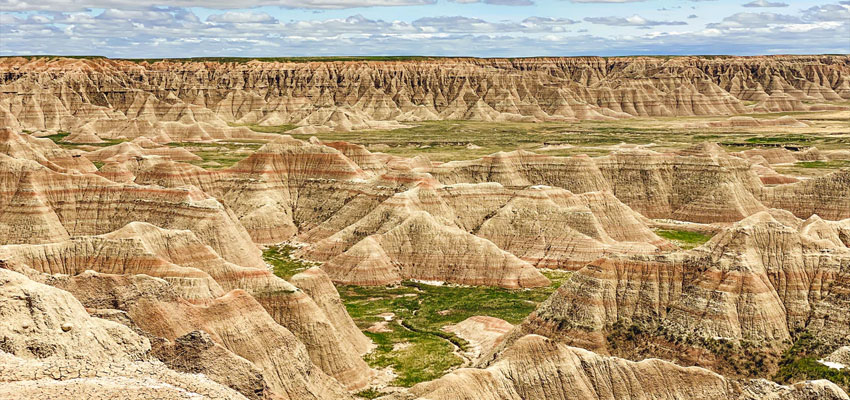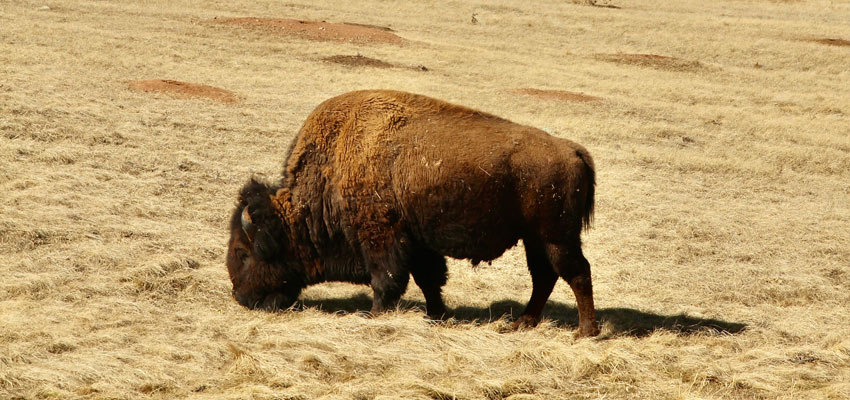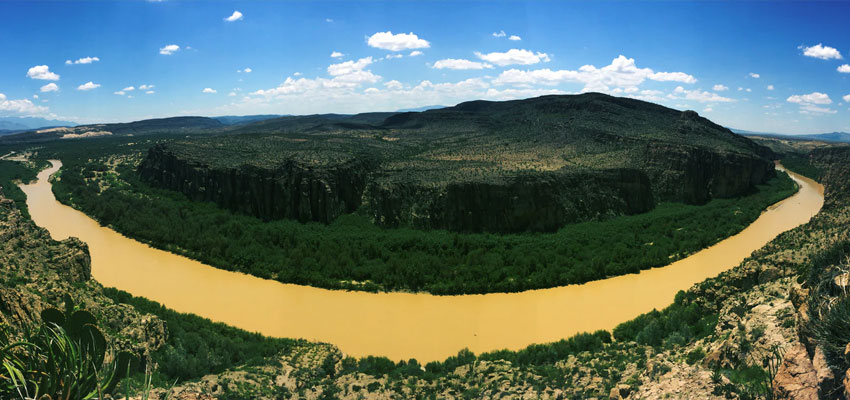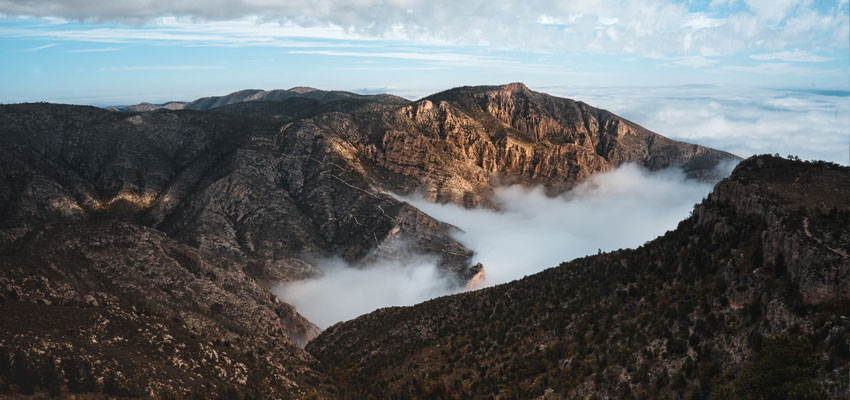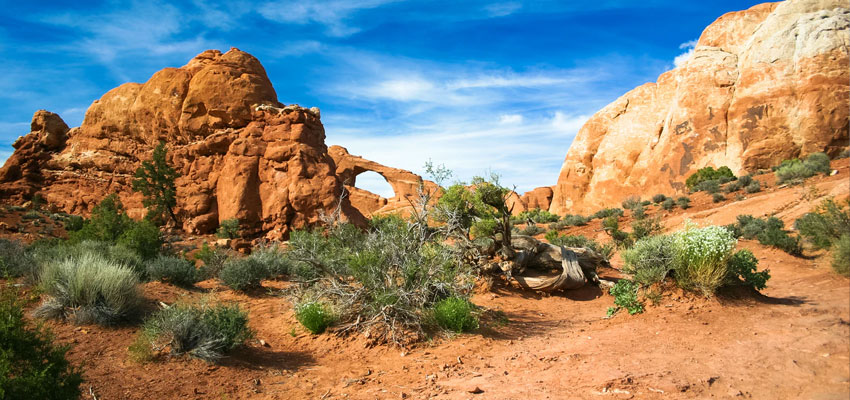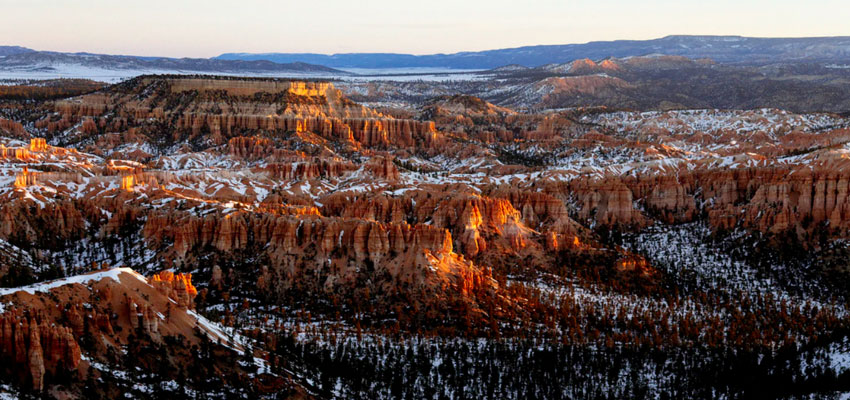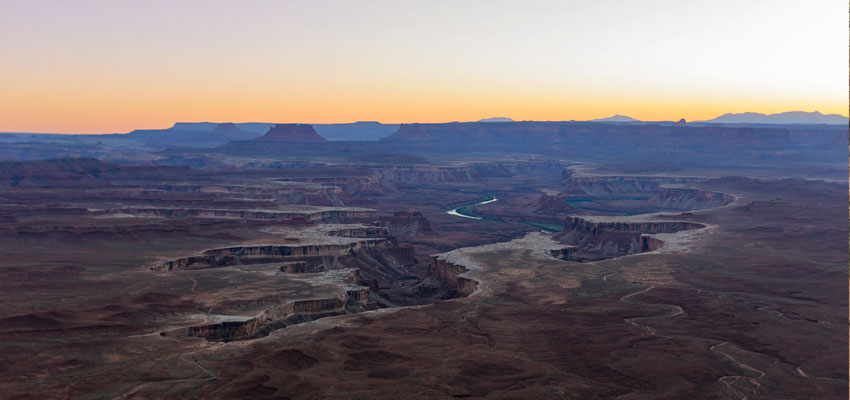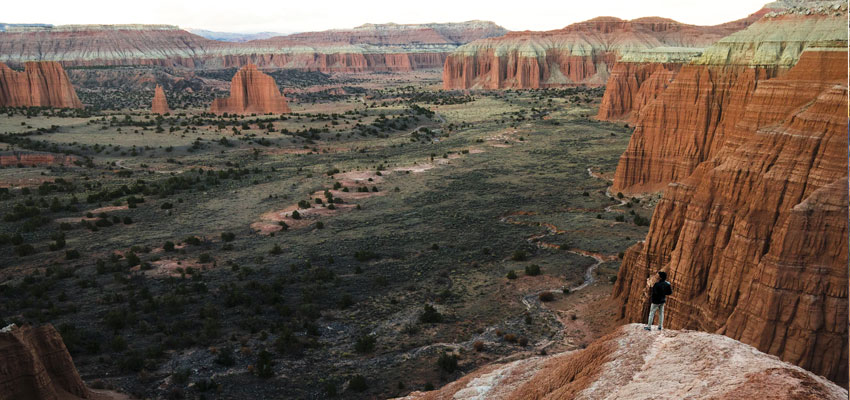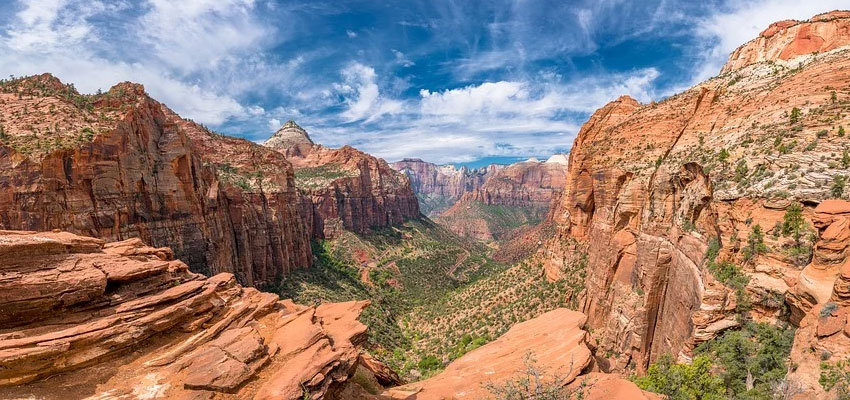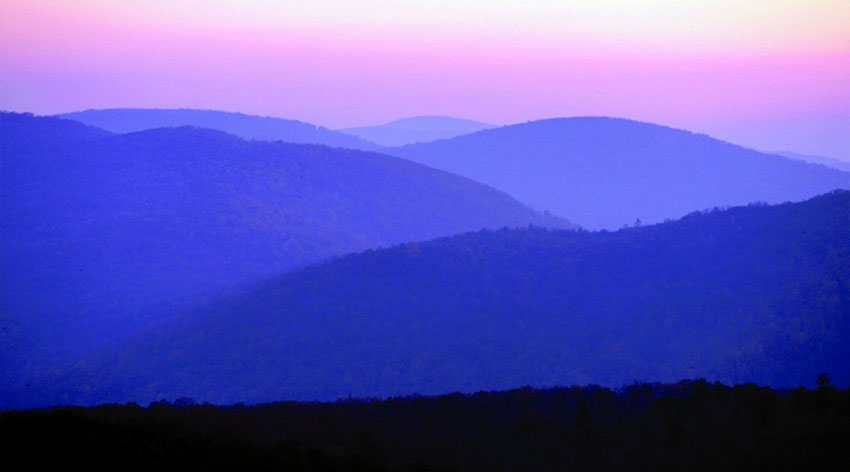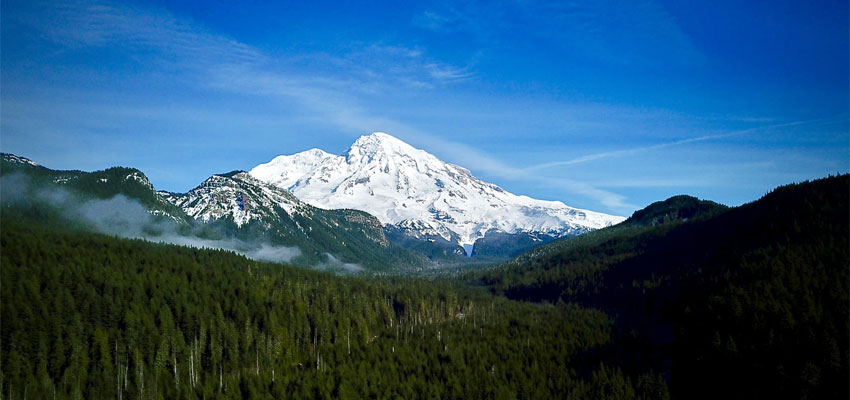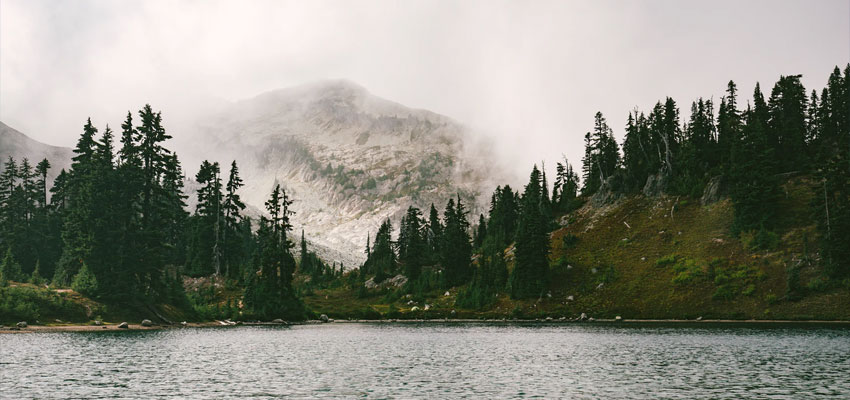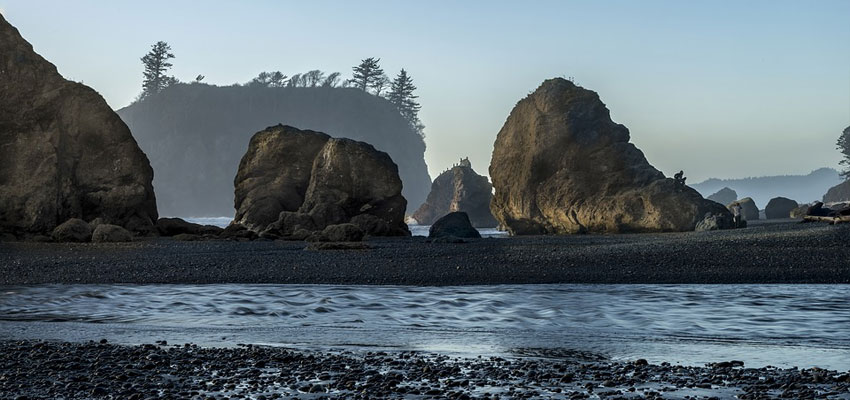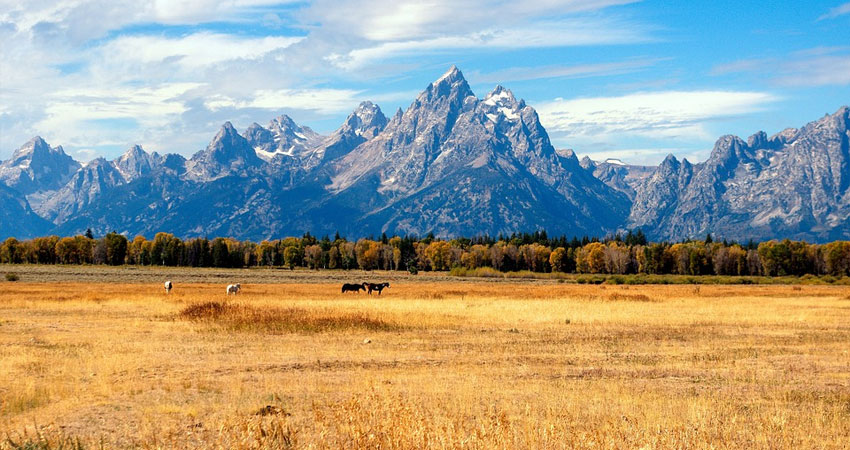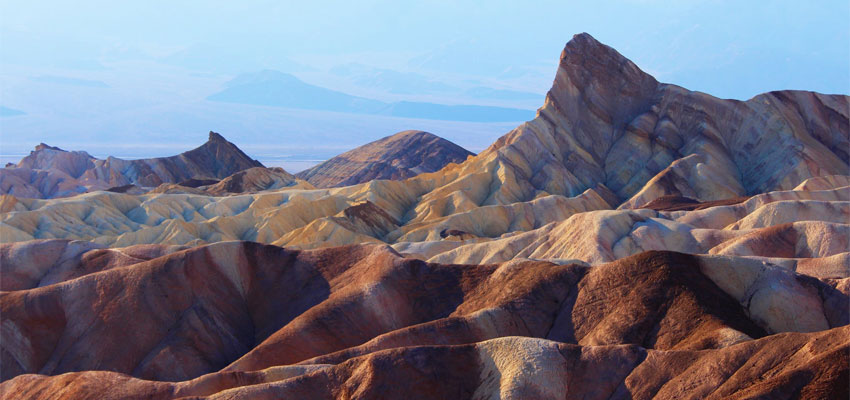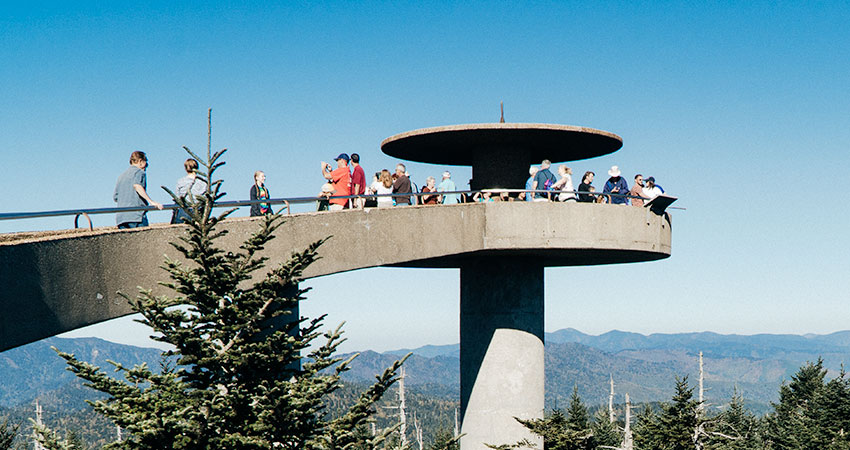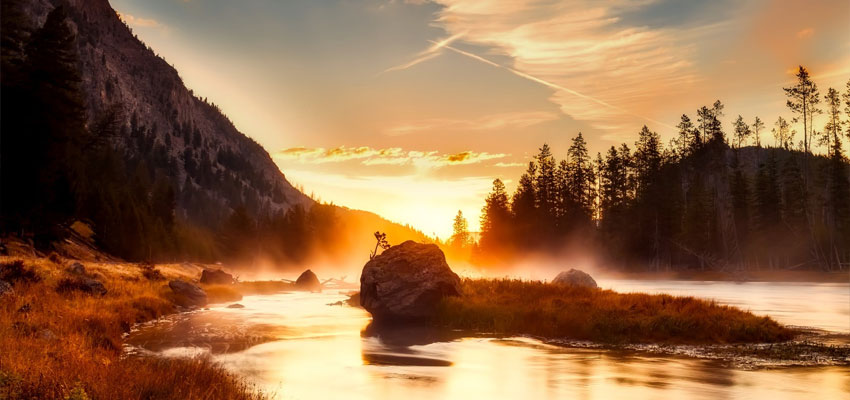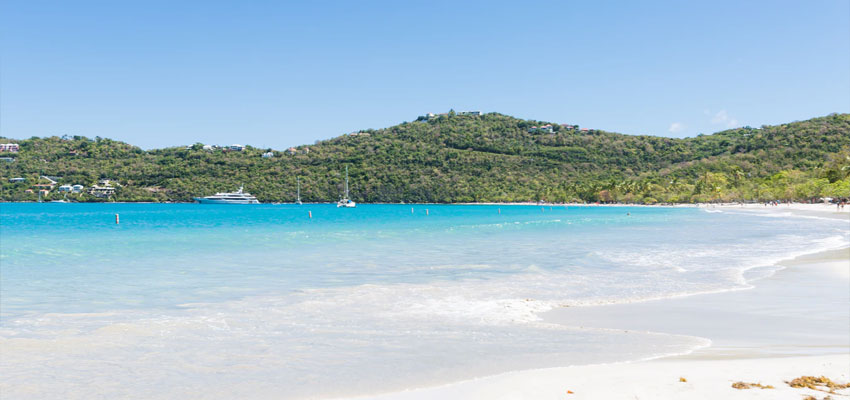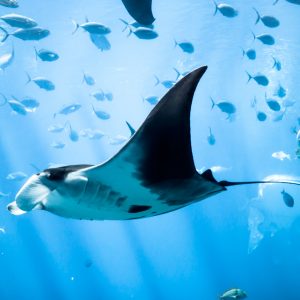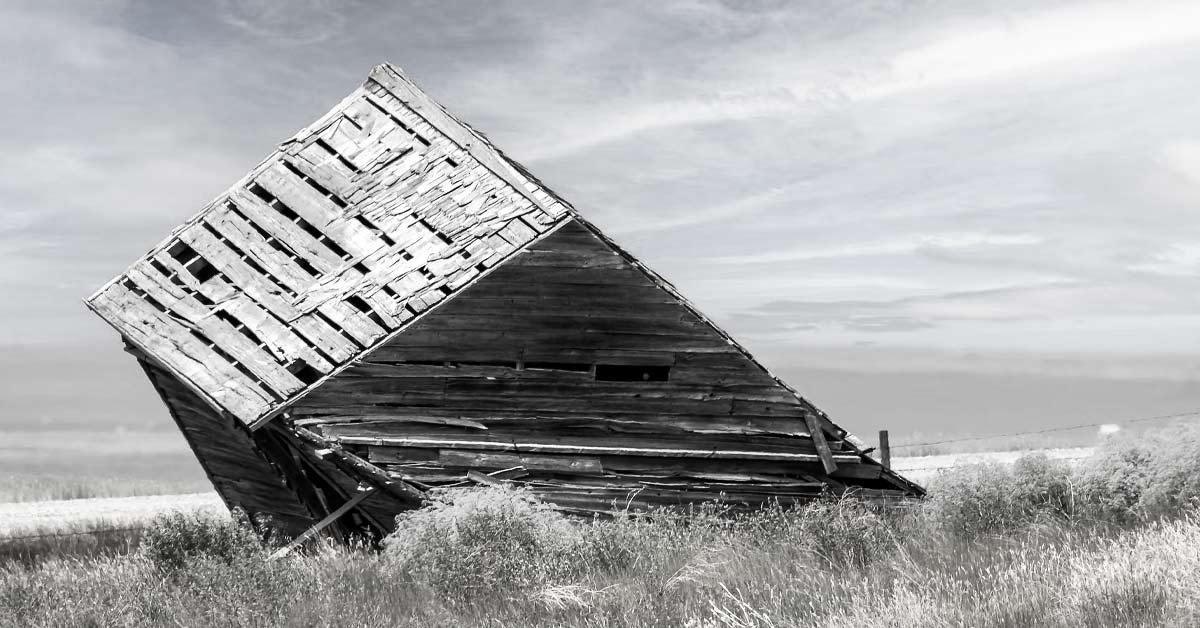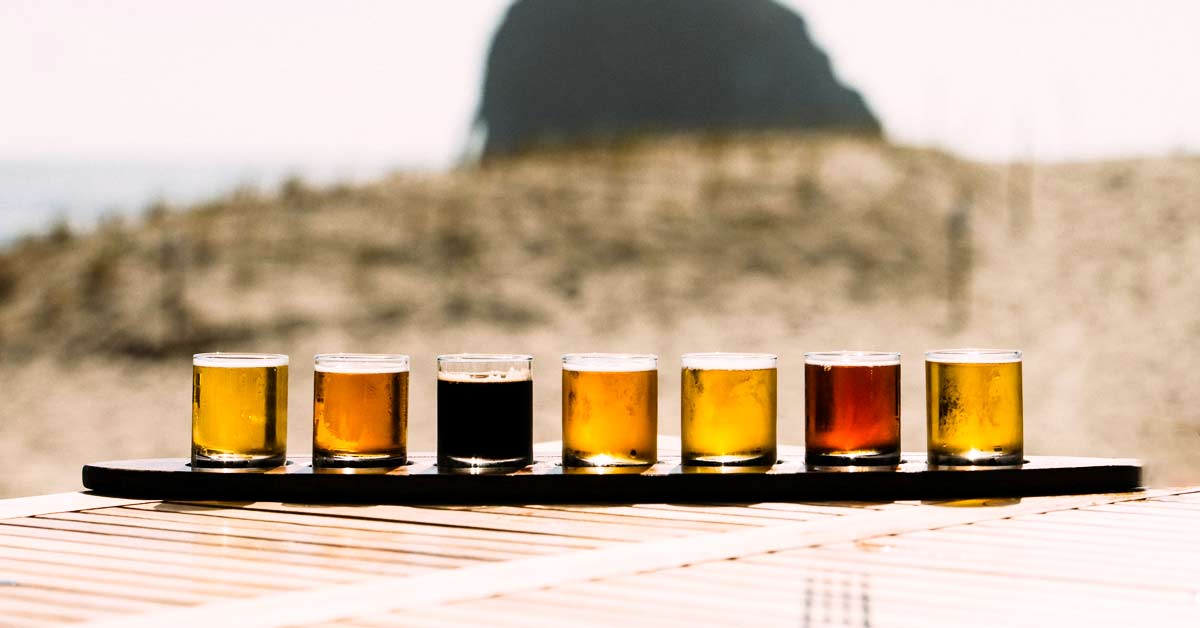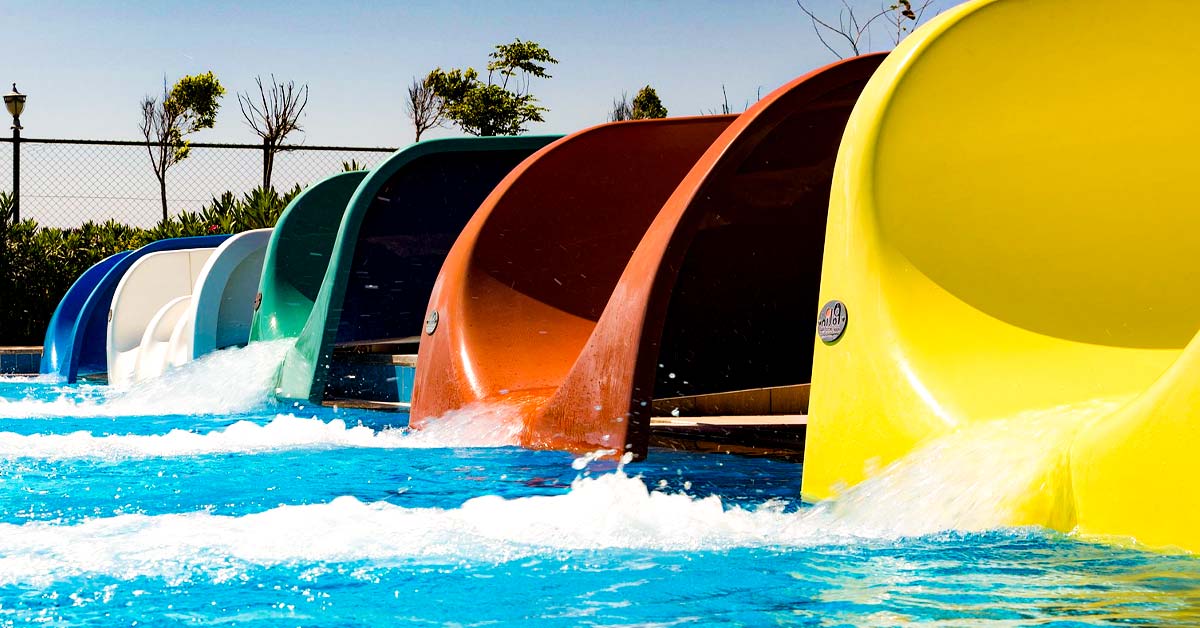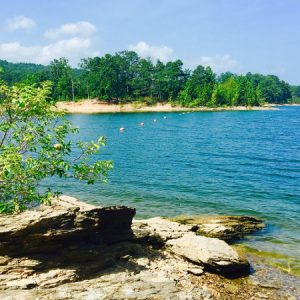This list of national parks in the US is THE ultimate guide, especially if you’re trying to decide which destination to visit next.
- How many national parks are there in the US?
- What makes each of the national parks stand out? What attractions can you find in a particular park?
- Are there accommodations inside the park?
- Can you explore the park in 1 day? Overnight? During a weekend? Or as a week-long trip?
I’ve summarized everything you need to know about the 60+ US national parks into this massive post, so you won’t waste time trying to figure out what park would fit best your travel requirements and preferences.
How many national parks are there in the US?
As of mid-2020, there are 62 national parks in the US, all of which are protected and operated by the National Park Service, which is part of the Department of the Interior.
For a park to be established into a “national park,” a bill must be made and then signed into law. The first one formalized as a national park was Yellowstone in 1872 under Ulysses S. Grant as POTUS.
Some national parks that were established in the past (such as the Mackinac National Park) can be decommissioned. This means the list below can still change in the future.
In addition, not all states have a national park.
- Alabama, Connecticut, Delaware, Georgia, Illinois, Iowa, Kansas, Louisiana, Maryland, Massachusetts, Mississippi, Nebraska, New Hampshire, New Jersey, New York, Oklahoma, Pennsylvania, Rhode Island, Vermont, West Virginia and Wisconsin do not have national parks.
- California, Alaska, Utah and Colorado are examples of states with 2 or more national parks. Visit these states if your purpose is to visit as many national parks in the country as possible.
List of National Parks by State
Here is the official list of national parks by state:
ALASKA
1. Denali
- Area: 4,740,911 acres (19,185.79 km2) – it’s the size of Massachusetts!
- Annual Visitors: 594,660 (2018)
- Ideal For: advanced hikers
- Days Needed to Explore: 3 days
- Must-See: the highest mountain in the US
This park is home to Denali – the highest mountain in North America (and comes third after Mount Everest and Aconcagua in the world). Pick this national park if you’re looking for the next thrilling hike (whether following a trail or not), or if you want to go face-to-face with nature’s wildlife from wolves to grizzly bears and amazing attractions like the Wonder Lake and glaciers of the Alaska Range.
2. Gates of the Arctic
- Area: 8,472,506 acres (34,287.02 km2)
- Annual Visitors: 9,591 (2018)
- Ideal For: advanced hikers, hunters, birdwatchers, campers, nature photographers
- Days Needed to Explore: at least 2 nights
- Must-See: how much you can explore without any road or trail to guide you
The Gates of the Arctic is home to Alaska Natives for over 13,000 years. If you want to really get one with nature, the Gates of the Arctic is definitely the place to go. This national park isn’t for the faint of heart, since there are no campsite, trails, roads, or any facilities you and I have been used to for decades.
3. Glacier Bay
- Area: 3,223,384 acres (13,044.57 km2)
- Annual Visitors: 597,915 (2018)
- Ideal For: Explorers (who wouldn’t mind long trails in search for new forests or chilly weather just to see spectacular glaciers)
- Days Needed to Explore: 1 day for kayaking/fishing, 1 day for glacier tours, 1 day for camping
- Must-See: Forest Loop Trail (used to be covered in glaciers but now turned into a mystical forest)
Breathtaking tidewater glaciers, mountains and rainforests are found at the Glacier Bay National Park and Reserve. But don’t miss whale watching (at Halibut Point) and Halibut fishing if you’re looking for something new to try.
4. Katmai
- Area: 4,093,077 acres (16,564.09 km2)
- Annual Visitors: 37,818 (2015)
- Ideal For: Brown bear lovers and water sports enthusiasts (kayaking/boating)
- Days Needed to Explore: At least 3 days
- Must-See: Brown bears fishing for salmon
Aside from the typical Alaskan wildlife like wolves, moose, and caribou, this national park is famously known for over 2,000 grizzly bears, who have called this area home and a place to catch salmon every year.
You can stay at Brooks Camp or if you’re only visiting for the day, take advantage of the camp’s multiple bear viewing platforms.
5. Kenai Fjords
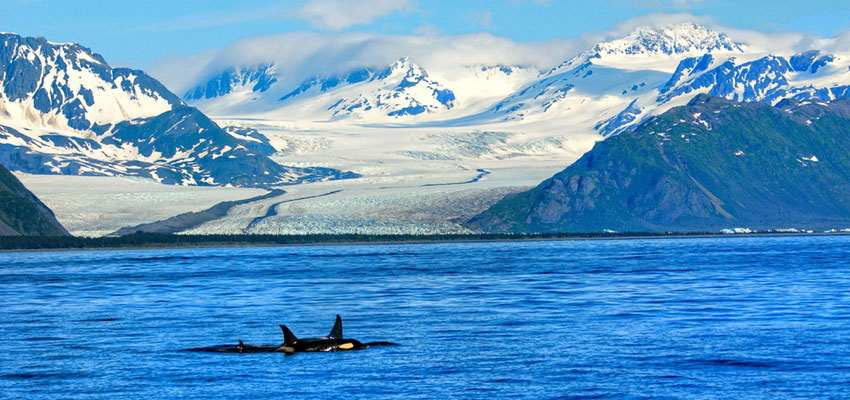
- Area: 669,984 acres (2,711.33 km2)
- annual visitors: 321,596 (2018)
- Ideal For: Hikers, boaters, kayakers, and wildlife enthusiasts
- Days Needed to Explore: At least 2 days
- must-see: Alaska’s unspoiled wildlife, glaciers and fjords
You can explore the Kenai Fjords National Park in several ways, from a boat tour to the Fox Island, to hiking the Exit Glacier and Harding Ice Field Trails which shows off one of the largest glaciers of its kind (plus about 35+ more glaciers)… there are plenty of unique things to do here that an overnight trip wouldn’t be enough.
6. Kobuk Valley
- Area: 1,750,716 acres (7,084.90 km2)
- Annual Visitors: 14,937 (2018)
- Ideal For: Backcountry campers or those completing a national park bucket list
- Days Needed to Explore: 1 whole day
- Must-See: Great Kobuk Sand Dunes (also Little Kobuk and Hunt River Sand Dunes if you have time)
Kobuk Valley is one of the least-visited national parks, mainly because it isn’t accessible by road.
You can only visit the park via chartered air taxi from Nome, Bettles, or Kotzebue and only when weather permits it. It is a beautiful place, which half a million caribou migrate to 2x a year, but it is “the most isolated wilderness” you can find in all of Alaska.
7. Lake Clark
- Area: 4,030,015 acres (16,308.89 km2)
- Annual Visitors: 14,479 (2018)
- Ideal For: Rafting, kayaking and wilderness hiking
- Days Needed to Explore: 2 to 3 days
- Must-See: Glaciers, volcanoes, alpine spires, wild rivers, and roving Brown bears
Like the Kobuk Valley, there is no road to get to this Alaska National Park so driving is not an option, but there are boat tours and small aircraft providers that can take you there. But once you get to the Lake Clark National Park and Preserve, your adventure awaits as you can join a bunch of water activities (including kayaking, rafting, and fishing), or explore the area such as the glorious Tanalian Falls and Kontrashibuna Lake.
8. Wrangell–St. Elias
- Area: 13,175,799 acres (53,320.57 km2)
- Annual Visitors: 79,450 (2018)
- Ideal For: Back-country campers, explorers and photographers of wildlife and Alaskan wilderness
- Days Needed to Explore: At least 2 days
- Must-See: Hubbard Glacier (the largest tidewater glacier in the US)
This National Park is one of only 23 UNESCO World Heritage Sites located in the United States.
Not only is this the largest National Park in the country, Wrangell–St. Elias is also home to the largest tidewater glacier in America. Aside from the hundreds of different species roaming 8+ million acres of land at Wrangell-Saint Elias, there are also several distinct Alaskan mountains and volcanoes within the park.
ARIZONA
9. Grand Canyon
- Area: 1,217,262 acres (4,926.08 km2)
- Annual Visitors: 5,974,411 (2019)
- Ideal For: those whose bucket list includes the Wonders of the World
- Days Needed to Explore: At least 1 overnight and 2 full days
- Must-See: Grand Canyon Skywalk and Desert Jeep Tour
The Grand Canyon has graced many movies and has inspired stories, poetries, and art works from all over the world. It is one of the world’s “on-going geological spectacle” since the canyon was carved (and is being carved) by the Colorado River and its millions of years of erosion has created the unique mesas and canyon walls.
You can explore its greatness from above (via helicopter), on the road (with jeep), from the river (through kayaking and other boat tours), or just from many overlooking points from both South and North Rims.
10. Petrified Forest
- Area: 146,930 acres (594.6 km2)
- Annual Visitors: 644,922 (2018)
- Ideal For: Geology enthusiasts
- Days Needed to Explore: At least half a day
- Must-See: Painted Desert and Crystal Forest
It may sound like something from the Harry Potter films, but this national park is home to over 220-million-year-old petrified wood.
And if you think the vibrant colors of the Painted Desert looked awesome, wait until you get to the Giant Logs Trail and be mesmerized by the massive petrified “Old Faithful” tree. Other Native American sites and dinosaur fossils are found throughout the Petrified Forest National Park.
11. Saguaro
- Area: 91,716 acres (371.16 km2)
- Annual Visitors: 957,405 (2018)
- Ideal For: sunset hunters, desert lovers and any level of hikers
- Days Needed to Explore: At least half a day
- Must-See: giant cactus
This Arizona National Park has two spectacular parts – the Tucson Mountain and Rincon Mountain districts, both with amazing views, unique hiking trails and their own visitor centers. If you’re planning to camp out, go to the Tucson Mountain District since the other route offers no overnight camping options.
ARKANSAS
12. Hot Springs
- Area: 5,550 acres (22.5 km2)
- Annual Visitors: 1,506,887 (2018)
- Ideal For: hikers, explorers, and any age looking for something new
- Days Needed to Explore: At least 1 whole day
- Must-See: Ozark Bathhouse and Superior Bathhouse Brewery
Known as “The American Spa,” Hot Springs National Park is home to 47 natural hot springs scattered through its 5,550-acre location.
Although not all of these hot springs are always open for the public to take a dip into, you can still enjoy many of the springs that maintain an average water temperature of 143° Fahrenheit. Aside from these naturally-occurring hot springs, you can also check out the local art at the Ozark Bathhouse and chill with a hot-spring-infused pales or golden stouts at the Superior Bathhouse Brewery.
CALIFORNIA
13. Channel Islands
- Area: 249,561 acres (1,009.94 km2)
- Annual Visitors: 366,250 (2018)
- Ideal For: beach lovers and water sport enthusiasts
- Days Needed to Explore: 3 days or more
- Must-See: sea caves
This isolated chain of islands (comprised of San Miguel, Santa Rosa, Anacapa, Santa Barbara, and Santa Cruz islands) just off the Southern California coast boasts pristine natural splendor. The park is home to over 2,000 plant and animal species.
Unfortunately, it can only be reached via private plane and boat. But if you have the means to visit, you’ll be at awe at the many diving, hiking, beach chilling, island-hopping opportunities you can grab.
14. Joshua Tree
- Area: 790,636 acres (3,199.6 km2)
- Annual Visitors: 2,942,382 (2018)
- Ideal For: rock climbers, campers and hikers
- Days Needed to Explore: at least 2 days
- Must-See: picnic areas at Keys View and Hidden Valley Nature Trail
One part Colorado Desert, and the other part Mojave Desert, the Joshua Tree National Park is aptly named because it is populated by numerous Joshua trees.
The area has an interesting mix of hiking trails (such as the Ryan Mountain Trail) and cactuses (visit the Cholla Cactus Garden), massive picturesque landscapes (like the Skull Rock) and the Cottonwood Spring Oasis, a permanent spring that’s pretty rare in deserts
15. Kings Canyon
- Area: 461,901 acres (1,869.25 km 2)
- Annual Visitors: 699,023 (2018)
- Ideal For: nature lovers, advanced hikers,
- Days Needed to Explore: 2 to 3 days
- Must-See: General Grant, Mark Twain tree stump
The Kings Canyon National Park may be named after the a rugged glacier-carved valley Kings Canyon, but it is more famous for being home to some of the most impressive giant sequoia groves, trees and even tree stumps.
Don’t miss the picture-taking opportunities at the General Grant tree, on top of gigantic tree stumps (Mark Twain or Castle Tree stumps), Grizzly Falls and Roaring River Falls, Zumwalt Meadow, Burnt Monarch, and the gorgeous views on the Kings Canyon Scenic Byway.
16. Lassen Volcanic
- Area: 106,452 acres (430.80 km2)
- Annual Visitors: 499,435 (2018)
- Ideal For: advanced hikers with a special love for geology and other wonders of nature
- Days Needed to Explore: a whole weekend (2 to 3 days)
- Must-See: Bumpass Hell Trail, views of Manzanita Lake, Boiling Springs Lake
Lassen Volcanic National Park is a pretty wonderful park with Lassen Peak (the largest lava dome volcano in the world) as its major attraction. It’s also famous for having all types of volcanoes (shield, cinder cone and composite) and various hydrothermal features like boiling hot springs, bubbling mud pots and more made by molten rock from below the Peak.
Surprisingly, even with active volcanoes at the park, there are plenty of things to do from camping, horseback-riding, relaxing at spas, and hiking to many unique trails. If you can visit by July or August, don’t miss the Dark Sky Festival, which gives you one of the most amazing star-gazing experiences in America.
17. Pinnacles
- Area: 26,606 acres (107.67 km2)
- Annual Visitors: 222,152 (2018)
- Ideal For: pro hikers, rock climbers and birdlovers
- Days Needed to Explore: At least 2 whole days
- Must-See: Bear Gulch Reservoir and Cave, Talus Cave, the High Peaks
Pinnacles National Park is a favorite California location of rock climbers and advanced hikers, mostly because of the massive eroded leftovers of an extinct volcano. But this park is also home to over a dozen species of bats (hiding in the Talus caves) and the California Condor (the largest bird in North America with an 8.2 ft to 9.8 ft wingspan).
18. Redwood
- Area: 138,999 acres (562.51 km2)
- Annual Visitors: 482,536 (2018)
- Ideal For: hikers and campers who love old-growth redwoods
- Days Needed to Explore: 2 days or more
- Must-See: Lady Bird Johnson Grove, Klamath River Overlook, Trillium Falls
Redwood National Park is where you’d find the tallest trees on earth. If these massive trees are what you came for, don’t miss the Howland Hill Road, Tall Trees Grove and the famous Lady Bird Johnson Grove.
If you’re looking for scenic drives, then check out Klamath River Overlook.
The Redwood National Park also has numerous beaches that are protected and pristine, so expect a full ecosystem of healthy plant and animal species everywhere.
19. Sequoia
- Area: 404,064 acres (1,635.19 km2)
- Annual Visitors: 1,229,594 (2018)
- Ideal For: those visiting Kings Canyon Park (since they go side-by-side)
- Days Needed to Explore: 1 whole day
- Must-See: Sherman Tree, Tunnel Log, Moro Rock, Tokopah Falls
As a national park that shares the same environment as Kings Canyon Park, you’ll also find some of the largest US trees in Sequoia as well. Mt. Whitney, the tallest mountain in the contiguous United States, can also be found at this park.
Aside from these, there’s also the short but strenuous climb to Moro Rock, this serene and small Crescent Meadow, as well as the underground marble cavern ‘Crystal Cave’ (1 of 240+ caves here) to explore.
20. Yosemite
- Area: 748,436 acres (3,028.81 km2)
- Annual Visitors: 4,422,861 (2019)
- Ideal For: nature photographers, hikers of all skill levels, rock climbers
- Days Needed to Explore: 3 days or more
- Must-See: Yosemite Valley Waterfalls, Half Dome Village, El Capitan
Yosemite is a popular National Park in California because it encompasses many features from the old-growth forests with giant Sequoias, to the exceptionally tall waterfalls.
Yosemite has spectacular hiking opportunities, but if you can choose from Yosemite’s Tunnel View with Half Dome, Valley View with Merced River, Glacier Point, and Olmsted Point if you’re not a hiking pro just yet.
The geology of the Yosemite area is characterized by granitic rocks and remnants of older rock, which is why the park attracts many rock climbers as well. There are also activities for camping, fishing, bear sightings, and other outdoorsy activities.
COLORADO
21. Black Canyon of the Gunnison
- Area: 30,750 acres (124.4 km2)
- Annual Visitors: 308,962 (2018)
- Ideal For: fishing, camping, boating, hiking, star-gazing, advanced rock climbing, pro hiking
- Days Needed to Explore: At least 2 days
- Must-See: The Gunnison River, and the North Rim of the Black Canyon
If you don’t like crowds, the Black Canyon of the Gunnison is the least-visited park in Colorado mainly because it is difficult to go visit. But the efforts are worth it, as you find yourself in the steepest of cliffs and oldest rocks in North America.
Aside from the extreme hiking and rock climbing, those who are afraid of heights can join stargazing activities or the free ranger program held from Memorial Day through September.
22. Great Sand Dunes
- Area: 149,028 acres (232.9 sq mi; 603.1 km2)
- Annual Visitors: 527,546 (2019)
- Ideal For: advanced hikers, campers, stargazing fans, extreme sports lovers, nature photographers
- Days Needed to Explore: At least 3 days
- Must-See: Zapata Falls, and Little Medano Creek
This list of national parks won’t be competed without the Great Sand Dunes National Park.
As its name suggest, it is home to the tallest sand dunes in North America (with some up to 750 feet). It has an interesting array of landscapes and environments, from grasslands and wetlands on one part to 13-foot mountains (6 of them) in other parts. Plus, there are old-growth forests, alpine lakes, high-altitude hike trails of the Sangre de Cristo Mountains, and so much more.
Don’t miss sand-boarding and sandsledding! It’s a pretty unique experience for all ages.
23. Mesa Verde
- Area: 52,485 acres (212.40 km2)
- Annual Visitors: 563,420 (2018)
- Ideal For: archaeology lovers, history buffs, cliff
- Days Needed to Explore: Half a day
- Must-See: Balcony House, the Cliff Palace, Step House, Chapin Mesa Archaeological Museum
This national park is perfect for history buffs since the area makes up over 4000 archaeological sites of the Ancestral Puebloan people, who lived here for at least 700 years. The 2.4-mile Petroglyph Point Trail showcases an amazing array of petroglyphs that date back to the 12th and 13th centuries.
24. Rocky Mountain
- Area: 265,461 acres (1,074.28 km2)
- Annual Visitors: 4,670,053 (2019)
- Ideal For: hikers, backpackers, mountain climbers
- Days Needed to Explore: 2-3 days
- Must-See: Emerald Lake, Alberta Falls, Longs Peak, Bear Lake
The Rocky Mountain National Park has everything for any nature lover. Go high and be face-to-face with glorious mountains and waterfalls. Go low and experience tranquil meadows and wildlife ranging from bighorn sheep to black bears.
If you’re a fan of scenic drives, make sure to include the Trail Ridge Road into your itinerary and marvel at a jaw-dropping view at 12,183 feet above sea level. Stop by the Forest Canyon Overlook while you’re at it – it has some of the best views out of all of Rocky Mountain park.
FLORIDA
25. Biscayne
- Area: 172,971 acres (699.99 km2)
- Annual Visitors: 469,253 (2018)
- Ideal For: hiking, camping, boating, fishing, sailing
- Days Needed to Explore: 1 whole day
- Must-See: Convoy Point Trail (kids/beginner-friendly), Boca Chita Key and Biscayne Bay (requires a boat), art gallery at the Dante Fascell Visitor Center
Perfect for water sport lovers, Biscayne National Park is the largest marine sanctuary in the country’s National Park system with 95% of the 173K-acre park underwater. Here you’ll find the Bay, the Keys, a mangrove forest, coral reefs (it has the third largest offshore reef in the world), and many threatened wildlife including the American crocodile, peregrine falcon, West Indian manatee and various sea turtles.
26. Dry Tortugas
- Area: 64,701 acres (261.84 km2)
- Annual Visitors: 56,810 (2018)
- Ideal For: beach lovers, bird watchers, history buffs
- Days Needed to Explore: At least 1 day
- Must-See: Fort Jefferson
Found at the westernmost end of the Florida Keys, the islands of the Dry Tortugas can only be reached by boat or plane. But it is worth the trip (at least for a whole day) if you’re dreaming of snorkeling the clearest waters in the country (you can even see shipwrecks clearly). For history lovers, check out Civil War-era artifacts at the Fort Jefferson.
27. Everglades
- Area: 1,508,976 acres (6,106.61 km2)
- Annual Visitors: 597,124 (2018)
- Ideal For: hiking, camping, canoeing, and stargazing
- Days Needed to Explore: 2 days minimum
- Must-See: Flamingo, Shark Valley, and Shark Valley Observation Tower
Next up is the Florida’s Everglades, which is considered the largest tropical wildness in the country with mangroves and tropical rainforest called home by 36 protected species such as the Florida panther and West Indian manatee.
The Everglades National Park has some of the most dramatic trails, from the Anhinga Trail, Mahogany Hammock Trail and Gumbo Limbo Trail (all of which are walking trails that get you up-close with nature), to exciting Shark Valley Tram Tours or Airboat Tours for a unique experience.
HAWAII
28. Haleakalā
- Area: 33,265 acres (134.62 km2)
- Annual Visitors: 1,044,084 (2018)
- Ideal For: sunset hunters, beach lovers, landscape photographers
- Days Needed to Explore: 2 to 3 days
- Must-See: Hosmer’s Grove, Maui Space Surveillance Complex
When you’re visiting Maui, make sure to stop by the Haleakalā National Park for a day or two. It was named after the Haleakalā volcano, which the locals believe is sacred and now offers spectacular views of the crater.
If you’re not afraid of heights, you can check out Pu‘u ‘Ula‘ula (Red Hill), the highest point on Maui at 10,023 feet, where you can definitely star-gaze or watch one of the most amazing sunsets you’ll ever witness.
29. Hawaiʻi Volcanoes
- Area: 323,431 acres (1,308.88 km2)
- Annual Visitors: 1,116,891 (2018)
- Ideal For: volcanology fans,
- Days Needed to Explore: At least 2 days
- Must-See: Kilauea Caldera, Volcano House
Hawaiʻi Volcanoes National Park is located on the Big Island, where two of the world’s most active volcanoes (Kīlauea and Mauna Loa) are located.
Aside from the many out-of-this-world geological features with extreme ecosystems from lava beds to tropical forests all over, make sure to check out the Kau Desert Trail, Martian-level Mau Loa o Mauna Ulu lava field, or the Pu‘u Loa Petroglyphs of about 23,000 images made by Hawaiians from 1200 to 1450.
INDIANA
30. Indiana Dunes
- Area: 5,067 acres (60.97 km2)
- Annual Visitors: 2,134,285 (2019)
- Ideal For: advanced hiking, camping, fishing, bird watching, cross-country skiing
- Days Needed to Explore: At least 1 day
- Must-See: Mount Tom (192 ft), Mount Holden (184 ft), and Mount Jackson (176 ft), which is fondly called “hiking the Three Dune Challenge” if you decide to brave these trails
Unlike others in this list of national parks, the Indiana Dunes National Park is a newly designated park and is quite urban with a power plant, steel mill and the entire Gary Indiana around it. There are 15 miles of beaches, views of Lake Michigan, and a wide range of landscapes of prairie, wetlands, forests, rivers and bogs in the area, but it’s known for the trio of exceptional hiking trails of Mounts Tom, Holden and Jackson.
KENTUCKY
31. Mammoth Cave
- Area: 52,830 acres (213.8 km2)
- Annual Visitors: 533,206 (2018)
- Ideal For: cave lovers
- Days Needed to Explore: At least 2 days
- Must-See: Frozen Niagara
The Mammoth Cave National Park is famous for the Mammoth Cave, the world’s longest-known cave system with 8 bat species calling it home. You can explore it via several routes, including:
- Wild Cave Tour – Anyone 17 years old and up can join this tour as long as they don’t have any medical conditions, fear of heights or claustrophobia. You wear overalls at the start of the tour since you’ll be on your knees (something passing crawl spaces) for over 6 hours. You even eat lunch inside the cave.
- Frozen Niagara Tour– If you don’t want to get down and dirty (or you’re traveling with young kids or seniors, this tour is your best bet. You begin from the top of the cave down about 50 feet at a much slower pace. This route only lasts an hour or so.
- Violet City Lantern Tour – This one takes you to the passageways of the caves with lanterns to guide your way, much like how they were used for prehistoric mining or dwellings of the Native Americans.
Aside from the jaw-dropping caves, Mammoth Cave National Park also covers about 52,000 acres of land and nearly 30 miles exclusive to the Green and Nolin rivers. As such, you have a ton of opportunities for hiking, camping, biking, horseback riding, boating and other water activities.
MAINE
32. Acadia
- Area: 49,076.63 acres (198.6 km2)
- Annual Visitors: 3,437,286
- Ideal For: hiking, camping,
- Days Needed to Explore: 3 to 4 days
- Must-See: Cadillac Mountain, Thunder Hole, Bass Harbor Head Lighthouse
Maine’s only entry for the US list of national parks is definitely worth the trip. It covers most of Mount Desert Island and is home to Cadillac Mountain (the tallest mountain on the Atlantic coast). There are plenty of interesting ecosystems in the park from forests and woodlands to ocean shorelines and granite peaks.
Two interesting sites here are:
- Thunder Hole – This geological wonder where you can experience the splashing and booming of waves as they hit the natural rock formation.
- Bar Harbor’s Harbor – The path to Bar Island is 12-feet gravel land bridge that only rises out of the sea during low-tide (about 3 hours daily), which then completely submerge for most of the day.
MICHIGAN
33. Isle Royale
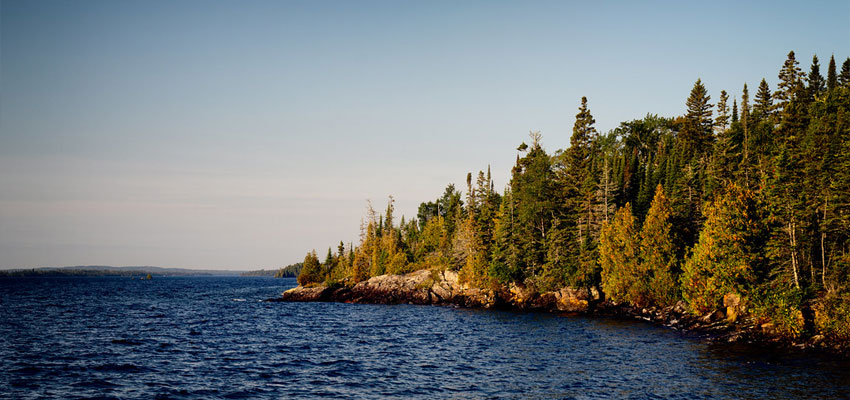
- Area: 571,790 acres (2,314.0 km2)
- Annual Visitors: 25,798 (2018)
- Ideal For: wilderness camping, fishing
- Days Needed to Explore: 3 days or more
- Must-See: Houghton, Rock Harbor, Windigo
Isle Royale National Park is the largest island in Lake Superior and the only national park in the US that completely closes during off-season (November through mid-April) due to extreme weather conditions.
The park can be reached only by boat, since it is located off the shore of Michigan in the middle of Lake Superior, but if you’re dreaming of camping and exploring authentic wilderness, the Isle Royale National Park is a good option.
Here you’ll find numerous hiking trails (it’s a backpacker’s paradise), but there are also opportunities for fishing, scuba diving, and just roughing it out in the wild along with 20 mammal species (like the wolf and moose) that live freely all over the island.
MINNESOTA
34. Voyageurs
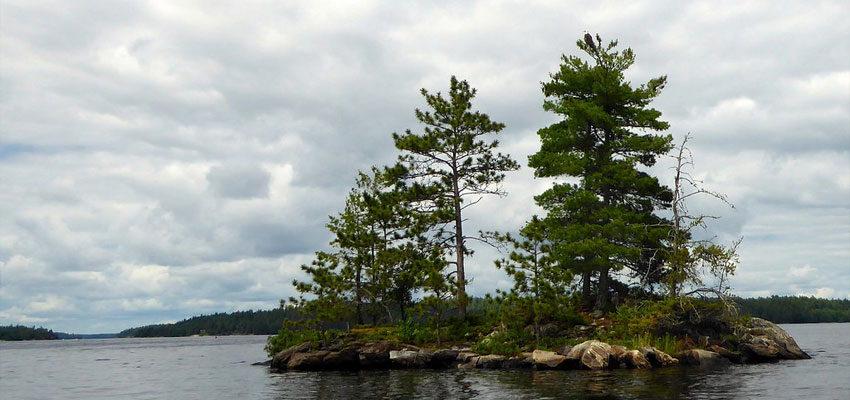
- Area: 218,200 acres (883 km2)
- Annual Visitors: 239,656 (2018)
- Ideal For: peaceful getaways, camping, boating, fishing, hiking
- Days Needed to Explore: At least 2 days
- Must-See: Kettle Falls, Ellsworth Rock Garden
Located near the US-Canada border, this park protects four lakes, which make it an ideal place if you’re after some fishing, boating, kayaking, canoeing, and camping. You won’t run out of jaw-dropping scenes to shoot and experience in person, regardless if you’re exploring the Kettle Falls, hiking to the Ellsworth Rock Garden, or watching the sunset near one of the lakes.
MISSOURI
35. Gateway Arch
- Area: 90.9 acres
- Annual Visitors: 2,016,180 (2018)
- Ideal For: architecture and engineering lovers,
- Days Needed to Explore: an hour or two
- Must-See: The Tram Ride to the Top
This list of national parks are mostly wonders of mother earth preserved for generations to come, but a few like the Gateway Arch involve marvels of man-made engineering.
This “arch” is 630 feet (both high and wide) and was built to commemorate the Lewis and Clark Expedition. It is definitely a sight to behold – walk from North Leg to the South Leg (and taking your time as you reach the center), or view it from high up if you use the retro elevator.
MONTANA
36. Glacier
- Area: 1,013,322 acres (4,100.77 km2)
- Annual Visitors: 3,049,839 (2019)
- Ideal For: sight-seeing, hiking, camping,
- Days Needed to Explore: At least 3 days
- Must-See: Going-to-the-Sun Road, Blackfoot Glacier, Lake McDonald
This national park is one of the world’s earliest peace-and-friendship parks with half in the U.S. border, and the other half located in Alberton, Canada. Within this park are 130 named lakes, 26 glaciers (with Blackfoot Glacier as the biggest of them all), local mountains, waterfalls, and hundreds of possible landscape photography opportunities wherever you look. There are also over 700 hiking trails available here.
Here’s a tip you should take: if you can only stay in Montana for a couple of days, Glacier National Park should be on the top of your list of places to visit.
NEVADA
37. Great Basin
- Area: 77,180 acres (312.3 km2)
- Annual Visitors: 153,094 (2018)
- Ideal For: hiking, caving, camping, stargazing, scenic drive
- Days Needed to Explore: At least 2 days
- Must-See: Lehman Caves, Bristlecone Pines, Wheeler Peak area
Great Basin National Park is home to Nevada’s second-tallest mountain, Wheeler Peak, and famous for 5,000-year-old bristlecone pines that are massive and awe-inspiring. If you’re an explorer at heart, you’ll love the tours going into the limestone Lehman Caves, or hiking the trails to a rock glacier.
If you want a memorable experience, check the calendar and see schedules for The Night Sky Star Train, an awesome tour that takes passengers in to Great Basin National Park to see the stars. Because of the park’s high elevation, dry desert air and remote location, Great Basin has some of the darkest skies in the country, which makes it an official ‘ International Dark Sky Park’ for astronomy lovers.
NEW MEXICO
38. Carlsbad Caverns
- Area: 46,766 acres (18,926 ha)
- Annual Visitors: 465,912 (2018)
- Ideal For: caving/spelunking, hiking, camping, scenic drive
- Days Needed to Explore: At least 1 whole day
- Must-See: Carlsbad Caverns, Rattlesnake Springs
If you’re a fan of exploring caves, then the Carlsbad Caverns National Park must be in the top of your bucketlist. This park contains a whopping 119 caves, but only 3 are open to the public:
- Carlsbad Caverns has been around for a long time and is fully developed complete with paved trails, elevators and electric lights, so the path wouldn’t be too challenging even for first-time spelunkers.
- Slaughter Canyon Cave and Spider Cave require guided tours for access since they are mostly undeveloped.
All three caves are home to thousands of bats (within 17 species, including the Mexican free-tailed bats).
Aside from these famous caves, there are also 10 hiking trails leading to the desert and the Rattlesnake Springs picnic area.
39. White Sands
- Area: 145,762 acres (589.88 km2)
- Annual Visitors: 608,785 (2019)
- Ideal For: landscape photography, wonders of the world hunters
- Days Needed to Explore: half-day for strolling, 2 for camping/hiking
- Must-See: Interdune Boardwalk, sunset on the Dunes
White Sands is only a small park, but if you have time to visit during your New Mexico trip, I recommend you do so. As its name suggest, White Sands refers to the field of white sand dunes composed mainly of gypsum crystals.
There are two things you should experience here:
- Try to walk on it barefoot (it doesn’t get hot or stick to your feet like regular sand).
- Wait for the sunset – the sun setting and the dramatic landscape of rare white gypsum sand dunes is a spectacular sight
NORTH DAKOTA
40. Theodore Roosevelt
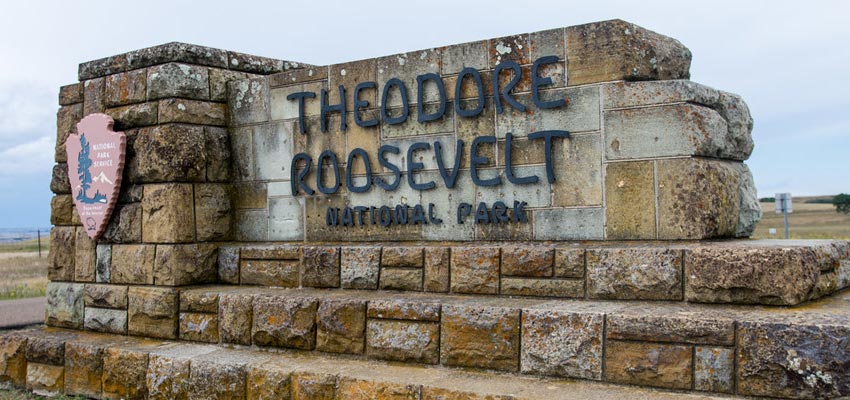
- Area: 70,446 acres (285.08 km2)
- Annual Visitors: 749,389 (2018)
- Ideal For: history buffs, scenic drives,
- Days Needed to Explore: At least 2 days
- Must-See: Teddy Roosevelt’s cabin, Elkhorn Ranch, Hoodoo rock formation
President Theodore Roosevelt often visited the North Dakota badlands to hunt bison. He even has his own place there, called Maltese Cross Cabin, which he bought before he became the country’s 26th president. His ranch, called Elkhorn Ranch, still stands at an altitude of 3700 feet.
Aside from the park’s rich Theodore Roosevelt history, there are also other activities in store at the park, such as fishing at Little Missouri River, witnessing the sunset at Buck Hill (where you can see a 360-degree view of the badlands), backcountry hiking, and enjoying the many scenic drives the area is known for.
OHIO
41. Cuyahoga Valley
- Area: 32,572 acres (131.8 km2)
- Annual Visitors: 2,096,053 (2018)
- Ideal For: hiking, sightseeing, skiing, exploring waterfalls
- Days Needed to Explore: 1 whole day
- Must-See: Virginia Kendall Ledges, Brandywine Falls
Ohio’s only national park, the Cuyahoga Valley mixes historic homes, structures and bridges with natural attractions like the Brandywine Falls.
If you’re up for a hike, there are various trails like the Erie Canal Towpath Trail or the trail that leads you to the forested landscape of the Virginia Kendall Ledges where you can marvel the massive limestone boulders, caves, and mossy cliffs.
For those with little time to explore, check the schedule of the Cuyahoga Valley Scenic Railroad, a unique feature of the park where you can ride the train and see the popular park attractions via the railroad.
OREGON
42. Crater Lake
- Area: 183,224 acres (741.48 km2)
- Annual Visitors: 720,659 (2018)
- Ideal For: scenic drives, wonders of the world hunters,
- Days Needed to Explore: 3 days (or more)
- Must-See: Crater Lake (from above), Wizard Island, Garfield Peak, Plaikni Falls
About 7,700 years ago, Mount Mazama (an ancient volcano) erupted and created a caldera which was eventually filled up with snow and rain, resulting in the tranquil and super-deep Crater Lake (with a depth of 1,943 feet). It is the country’s deepest lake and famous for its water clarity and vividly blue color since no springs or rivers feed the lake.
Today, this park protects the Crater Lake and all other attractions within in, such as the Wizard Island and Phantom Ship.
Don’t miss the Rim Drive, a life-changing experience where you’ll be able to encircle the entire lake (33 miles of it) from every possible angle with more than 30 overlooks available for awesome photoshoots or just simply taking in the extraordinary scenery. I should definitely include this in my post about the most scenic drives in America.
SOUTH CAROLINA
43. Congaree
- Area: 26,276 acres (106.34 km2)
- Annual Visitors: 145,929 (2018)
- Ideal For: forest loving, hiking, camping, canoeing, fishing, nature photography
- Days Needed to Explore: At least 1 full day
- Must-See: Harry Hampton Visitor Center, Boardwalk Loop, massive Loblolly Pines
This list of national parks wouldn’t be complete with South Carolina’s Congaree National Park, since it is the largest area with old-growth floodplain forest left in North America. Here, you can see (and hug) some of the tallest trees in eastern US. To get close and personal with the trees, take the Boardwalk Loop trail.
Aside from these giant trees, you can also witness a swarm of turtles in the water, or birds and owls just above you. One memorable event comes around the end of May to mid-June, when thousands of fireflies light up the Congaree forest at the exact same time.
Picking the season to visit Congaree is important because it could be pretty mosquito-infested in wet seasons.
SOUTH DAKOTA
44. Badlands
- Area: 242,756 acres (982.40 km2)
- Annual Visitors: 1,008,942 (2018)
- Ideal For: hiking, landscape photography, wonders of the world hunters
- Days Needed to Explore: At least 2 whole days
- Must-See: The Badlands Wall, Fossil Exhibit Trail, Roberts Prairie Dog Town
The Badlands is an interesting place with half made of 244,000 acres of geological deposits, fossil beds, buttes, spires, and ruddy plateaus, and the other half with grasslands that are home to wildlife ranging from prairie dogs, bighorn sheep, pronghorn, buffalo, swift fox, coyotes and the largest free-roaming bison in the country.
Badlands National Park boasts hundreds of miles of trails for hikers of all skill levels. There are also several camping spots and adventures if you’re interested in bike tours, horseback riding, or sky gazing programs.
45. Wind Cave
- Area: 33,847 acres (136.97 km2)
- Annual Visitors: 656,397 (2018)
- Ideal For: explorers, spelunking,
- Days Needed to Explore: Half a day
- Must-See: boxwork, Custer State Park, Rankin Ridge Fire Tower
The Wind Cave, one of the longest and most complex caves in the world, is located at this park. It is a beloved and culturally significant cave to the Lakota people and known publicly for its distinctive calcite fin formations called boxwork, which is rarely found elsewhere.
It only takes 2-3 hours to explore the cave, but above ground, you can hike, camp, and explore the mixed-grass prairie where South Dakota wildlife like cougars, elk, black-footed ferrets and prairie dogs call home.
TEXAS
46. Big Bend
- Area: 801,163 acres (3,242.19 km2)
- Annual Visitors: 440,091 (2018)
- Ideal For: advanced hiking, history buffs, scenic drives
- Days Needed to Explore: At least 3 days
- Must-See: Boquillas Canyon Rapids, Langford Hot Springs, Emory Peak, Boot Canyon, Rio Grande Village Area
Big Bend National Park is famous for the Rio Grande River situated along the U.S.-Mexico border.
For those who love scenic vistas, the Big Bend offers a diverse natural landscape from mountains (mainly the Chisos Mountains) to rivers, deserts, and forests all within the park. There are many opportunities for hiking, bird-watching (watch out for the Colima Warbler), and star-gazing.
If you’re traveling by car, you can take the scenic drive along Old Ore Road or the Ross Maxwell Scenic Drive.
47. Guadalupe Mountains
- Area: 86,367 acres (349.51 km2)
- Annual Visitors: 172,347 (2018)
- Ideal For: pro hiking, camping, those in search of the highest attractions
- Days Needed to Explore: 2 to 3 days
- Must-See: Pine Springs Campground, Devil’s Hall Trail, McKittrick Canyon
For those looking for thrills, visit Guadalupe Mountains and take a hike up Guadalupe Peak, the highest point in Texas. This picturesque park is also famous for its bigtooth maple trees at McKittrick Canyon, which dramatically changes color during fall.
Hike up to The Bowl and Bush Mountain if you came here to hike, but if you’re in search of wildlife, your best bet is near the Chihuahuan Desert.
UTAH
48. Arches
- Area: 76,679 acres (310.31 km2)
- Annual Visitors: 1,663,557 (2018)
- Ideal For: hiking, landscape photography, scenic drive, thrill-seeking,
- Days Needed to Explore: whole day
- Must-See: Delicate Arch, Turret Arch, Balanced Rock, La Sal Mountains, Double Arch, Fiery Furnace
Arches National Park, as its name suggest, is where you’ll find over 2,000 natural sandstone arches in varying sizes. The most popular of which are the Delicate Arch, Landscape Arch and Double Arch, which were formed through millions of years of erosions. Hike to the lowest one, or challenge yourself to get to the highest, you’d still be in awe of the unique geologic formations and spectacular views.
49. Bryce Canyon
- Area: 35,835 acres (145.02 km2)
- Annual Visitors: 2,679,478 (2018)
- Ideal For: hikers, horseback riding, wonders of the world hunters, geology fans, scenic drives, dirt road tours
- Days Needed to Explore: 3 to 4 days
- Must-See: Inspiration Point, Bryce Point, Natural Bridge
There are numerous opportunities for photo-shoot in this Utah park, especially since Bryce Canyon National Park is a geological amphitheater with hundreds of sandstone hoodoos, which were formed by erosion and now brightens up this massive area with their multicolor formations.
Take the Navajo Loop Trail as an example. You can get super-close with two side-by-side rock cliffs, which is separated by a slot canyon amusingly called ‘Wall Street.’
Other trails are available, if you want to hike up and witness the wide-angle view from above, or drive by the rim and use the safer overlooks instead.
50. Canyonlands
- Area: 337,598 acres (1,366.21 km2)
- Annual Visitors: 739,449 (2018)
- Ideal For: Hiking, rafting, kayaking, offroading, sightseeing, history or geology fans,
- Days Needed to Explore: At least 2 days
- Must-See: Maze Canyonlands, Visitor Center Overlook, Needles District, Schaffer Canyon and Trail Overlook
Like the other Utah-based national parks on this list, Canyonlands showcase the best of the state’s rugged canyons, mesas, buttes, and arches. But here’s where Canyonlands is unique: it is divided into three districts: Island in the Sky, the Needles, and the Maze, each with special characteristics that make it a must-see.
- Island in the Sky – Most popular and most-visited district with hiking trails that are friendly to all skill levels.
- The Needles – Offers more stunning landscapes thanks to uniquely-shaped sandstone rocks. There are less crowds here, since the location is not as accessible as Island in the Sky.
- The Maze – The most remote, but most exciting, especially if you have a 4×4 to drive on the way to this district.
51. Capitol Reef
- Area: 241,904 acres (978.95 km2)
- Annual Visitors: 1,227,627 (2018)
- Ideal For: hiking, scenic drives, picnics, landscape photography
- Days Needed to Explore: At least 1 full day
- Must-See: Waterpocket Fold, Fruita Historic District, Sunset Point, Grand Wash Trail and Cassidy Arch, Cathedral Valley
It doesn’t matter where you enter the Capitol Reef National Park – look left or right and you’d be face to face with some of the most jaw-dropping, naturally-formed cliffs, monoliths, sandstones and other geological marvels Utah is known for and loved.
But if you really want to experience something magical, here are several scenic drives to include in your itinerary:
- 8 Mile Scenic Drive
- Highway 24 Scenic Drive
- Burr Trail and Scenic Byway & Notom Bullfrog Road
- Cathedral Valley
If you are planning to hike and see the earth’s diverse geologic layers from high above, check out the Cassidy Arch Trail, Hickman Bridge Trail, Grand Wash Trail or Capitol Gorge Trail.
52. Zion
- Area: 146,597 acres (593.26 km2)
- Annual Visitors: 4,488,268 (2019)
- Ideal For: adrenaline-seekers, hikers, explorers, scenic drive, campers
- Days Needed to Explore: At least 4 days
- Must-See: Angel’s Landing, The Subway, Weeping Rock, Checkerboard Mesa
From this list of national parks, Zion is one of my personal favorites. It has everything you can think of – from waterfalls to woodlands, forests, the Mojave Desert, and never-ending sandstones, canyons, rock towers and mesas.
If you’re after the perfect hike, the Angel’s Landing is a must-do, but you’d have to be a bit experienced though. For average-skilled hikers, the Northgate Peaks, Zion Narrows, Imlay Temple and Big Spring will keep you busy for a day or two.
Even those who are not fans of hiking can enjoy at the Zion. The Narrows Riverside Walk and Canyon Overlook Trail are good examples of relaxed sightseeing. Or you can even take the Zion Canyon Scenic Drive for zero hiking, but full-on awe-inspiring views. While you’re at it, make sure to drive by the Checkerboard Mesa as well.
VIRGINIA
53. Shenandoah
- Area: 199,173 acres (806.02 km2)
- Annual Visitors: 1,264,880 (2018)
- Ideal For: camping, hiking, swimming, bird watching, scenic drive, horseback riding, nature photography
- Days Needed to Explore: At least 1 whole day
- Must-See: Blue Ridge Mountain overlooks, Big Meadows, any of the 10 Shenandoah National Park waterfalls
Shenandoah National Park truly defines the beauty of Virginia. If you’re looking for a vacation spot, check out the campgrounds and lodges available here. Spending two or more days in the middle of the Blue Ridge Mountains, hardwood forests and wildlife like white-tailed deer, foxes, beavers, skunks, coyotes, and black bear will surely make it a trip worth remembering.
For those with less time to explore the park, I suggest you either take the Skyline Drive (an 105-mile road that passes scenic overlooks giving you a majestic view of the Shenandoah River. Meanwhile, the Appalachian Trail runs the entire length of the park, which is perfect for those who wish to hike but have little time available.
WASHINGTON
54. Mount Rainier
- Area: 236,381 acres (956.60 km2)
- Annual Visitors: 1,518,491 (2018)
- Ideal For: nature photography, mountain climbing, lake fishing, waterfall exploring,
- Days Needed to Explore: At least 3 days
- Must-See: Mount Rainier fire lookouts, Ranger Falls, Oak Creek Wildlife Area, sunset/sunrise at any of the lodges
Mount Rainier National Park has one of the most postcard-worthy views you can find in the country.
The park’s main attraction, Mount Rainier, is an active stratovolcano covered by 26 named glaciers like Carbon Glacier and Emmons Glacier.
This national park has 3 major areas: Paradise, Longmire and Sunrise:
- Paradise – Located on the south slope, Paradise is known for being the snowiest place on Earth. Over 60% of the park’s visitor come here and stay at the famous Paradise Inn.
- Longmire – Here you’ll find Mount Rainier’s National Park Inn, the Longmire Museum, and the start of the Wonderland Trail (an awesome trail that encircles the mountain).
- Sunrise – While this is the least-visited area of the park, this northeastern part of the park also has the highest point (at an elevation of 6,400 feet) in Mount Rainier that is accessible by vehicle.
55. North Cascades
- Area: 504,654 acres (2,042.26 km2)
- Annual Visitors: 30,085 (2018)
- Ideal For: Mountaineering, camping, hiking, nature and landscape photography
- Days Needed to Explore: 2 to 4 days
- Must-See: Rainy Lake, Ladder Creek Falls, Diablo Lake, Thunder Knob, Stehekin
North Cascades has three parts: The Ross Lake National Recreation Area, North Cascades National Park, and Lake Chelan National Recreational Area.
No matter which area you visit first, North Cascades offers over 300 magnificent glaciers, majestic mountains, gorgeous alpine lakes and never-ending forest and wildlife.
If you’re after life-changing views, don’t miss the Diablo Lake Overlook or Washington Pass Overlook. Those up for a hiking challenge on the glaciated mountains should check out Mount Triumph or Mount Shuksan, Thunder Knob, Eldorado Peak or Cascade Pass. There are numerous waterfalls in the park as well.
I recommend you give time to visit the quaint little town, Stehekin, which sits on Lake Chelan (one of the deepest lakes in America) and showcases amazing 360-degree glacier and mountain views.
56. Olympic
- Area: 922,650 acres (3,733.8 km2)
- Annual Visitors: 3,245,806 (2019)
- Ideal For: hiking, natural wonders, sightseeing, beach trip, exploring
- Days Needed to Explore: 2 days minimum
- Must-See: Hall of Mosses, Rialto Beach, Hoh Rain Forest, Enchanted Valley, Lake Crescent
Olympic is the last one from Washington on this list of national parks, and it’s definitely a must-visit if you’re planning a trip down the capital state.
The main star of this park is the Olympic Mountains, a mountain range that rises from the Pacific Ocean to an elevation of nearly 8,000 feet at the top of Mount Olympus. With the Pacific Ocean only 33 miles west, some water from the ocean run into the mountains, feed rainforests like the Hoh or Quinault Rainforests, waterfalls and rivers below it.
If hiking isn’t part of your plan, you can still enjoy the view at the top of Hurricane Ridge. You can also visit some of the beaches within the park, such as Ruby Beach or Rialto Beach.
WYOMING
57. Grand Teton
- Area: 310,000 acres (1,300 km2)
- Annual Visitors: 3,405,614 (2019)
- Ideal For: mountaineering, hiking, backcountry camping, fishing
- Days Needed to Explore: 5 to 7 days
- Must-See: Jenny Lake Trail, Chapel of the Transfiguration, 42-mile Scenic Loop Drive, Moose Wilson Road
Grand Teton is the tallest mountain in the Teton Range, which makes the park a hiker’s paradise.
To know more about this park, check this post for a more in-depth look of Grand Teton.
List of National Parks Found in Multiple States or Special U.S. Territories
The last five national parks are located in special U.S. territories, or within 2 or 3 states.
58. Death Valley (California & Nevada)
- Area: 3,373,063 acres (13,650.30 km2)
- Annual Visitors: 1,678,660 (2018)
- Ideal For: scenic drives, stargazing, wonders of the world hunters, landscape photography
- Days Needed to Explore: 1 to 2 days
- Must-See: Rhyolite Ghost Town, Natural Bridge, Ubehebe Crater, Wildrose Charcoal Kilns
This national park runs through the California–Nevada border and is considered the hottest, lowest, and driest place in the United States with daytime temperatures that have exceeded 130 °F (54 °C).
But don’t let that fact keep you from going to Death Valley, especially if you’re a fan of geology and naturally-occurring sites such as:
- Racetrack Playa or “The Racetrack” – a scenic dry lake famous for its moving stones that cause those linear “racetrack” imprints.
- Artists Palette – a multicolor volcanic and sedimentary hill
- Ubehebe Crater – a massive, 600-feet-deep volcanic crater
- Mosaic Canyon – it’s called an “outdoor museum” for a reason
Of course, these are only a few must-see attractions since the entire park protects various mountain ranges, springs, canyons, badlands, sand dunes, historic mines and the Badwater Basin with its salt flats.
59. Great Smoky Mountains (North Carolina & Tennessee)
- Area: 522,419 acres (2,114.15 km2)
- Annual Visitors: 12,547,743 (2019)
- Ideal For: hiking, camping, exploring wilderness
- Days Needed to Explore: At least 2 days
- Must-See: Newfound Gap, Clingmans Dome, Alum Cave, Rainbow Falls, The Sinks
Great Smoky Mountains National Park straddles the border between North Carolina and Tennessee.
If you’re after a wide range of hiking opportunities, this park is a go-to thanks to the varying elevations and over 800 miles of trails of the Appalachian Trail available for you to conquer. You can also fish, visit historic sites, marvel at thousands of synchronous fireflies, or just chill at spots like The Sinks and Rainbow Falls.
60. Yellowstone (Wyoming, Montana, Idaho)
- Area: 2,219,791 acres (8,983.18 km2)
- Annual Visitors: 4,020,288 (2019)
- Ideal For: hiking, hot springs, volcanology fans, nature photography, camping, boating, fishing
- Days Needed to Explore: 3 days minimum
- Must-See: Grand Prismatic Spring, Old Faithful, Norris Geyser Basin, Clepsydra Geyser
Spanning three states, Yellowstone National Park is the first-ever designated national park in the country (and the world).
The entire park lies on top of a supervolcano, which erupted almost 630,000 years ago and created the Yellowstone caldera. Because of this, Yellowstone is famous for its unique geothermal attractions that feature boiling mud pots, multi-color hot springs (like the must-see Grand Prismatic Spring), continuously-erupting geysers (like the Clepsydra Geyser and the Old Faithful), and many more.
Aside from the park’s volcanic features, Yellowstone is also known for four mountain ranges, numerous waterfalls, and a very healthy wildlife consisting of timber wolves, bears, bison, elk, and hundreds more.
61. American Samoa
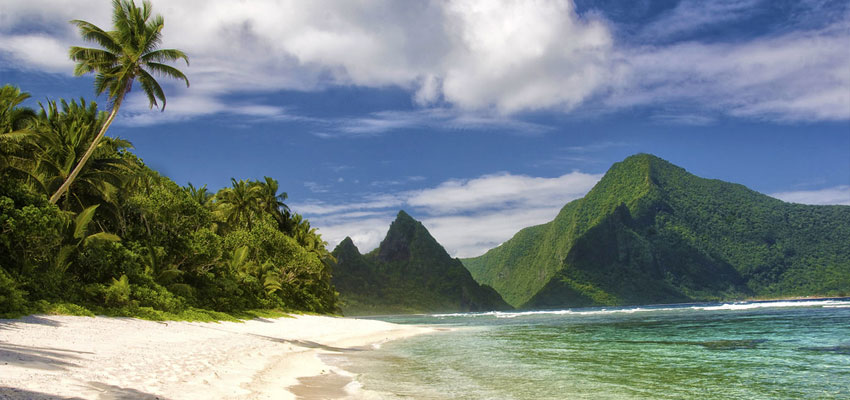
- Area: 13,500 acres (55 km2)
- Annual Visitors: 28,626 (2018)
- Ideal For: beach, hiking, exotic destinations, history buffs
- Days Needed to Explore: At least 2 days
- Must-See: Mount Alava, Breakers Point and Blunt’s Point
The first U.S. territory on this list of national parks is located at the southernmost part of the country. The National Park of American Samoa is situated on three Samoan islands, even if only Tutuila (the north end of the park) is accessible to tourists.
You’ll find pristine beaches, coral reefs, rainforests, volcanic mountains, and a massive number of sea turtles and 900 species of fish.
The only way to get here is by visiting Hawaii first, then taking one of two weekly Hawaiian Airlines (hawaiianairlines.com) flights going to Pago Pago International Airport on Tutuila. Note that you won’t find resorts, campgrounds or any lodging facilities here, but the park has a unique homestay program where you could spend a night with a Samoan family.
62. Virgin Islands (U.S. Virgin Islands)
- Area: 14,737 acres (59.64 km2)
- Annual Visitors: 112,287 (2018)
- Ideal For: beach hopping, diving, hiking, exotic getaways, history buffs
- Days Needed to Explore: At least 3 days
- Must-See: Annaberg Plantation Ruins, Trunk Bay, Bordeaux Mountain Trail, windmill ruins at Peace Hill
The Virgin Islands National Park can only be visited by flying into St. Thomas, U.S. Virgin Islands in the Caribbean, taking a cab or rental car to the ferry dock, and then riding a boat to St. John. From the main island to the national park, it would take an hour of travel and cost an extra $12/person.
The hassle of going to Saint John is definitely worth it. The Virgin Islands National Park and its beaches are pristine, clean and never full of tourists. Aside from diving, snorkeling and beach hopping, you can also enjoy hiking and visiting the Taíno archaeological sites, ruins of sugar plantations during Columbus era, and exploring mangrove forests.
Where to Go Next
Choosing your next destination is tricky when there are numerous options available. But you can filter these national parks based on three considerations:
- Location: Are you willing to fly all the way to the other side of the country? Or would you rather stick to a destination that can easily be reached via road. Here are the best east coast national parks, and west coast national parks to make your choices more manageable. Is your heart decided on visiting the parks encompassing the mountain west states (Montana, Idaho, Wyoming, Nevada, Utah, Colorado, Arizona, and New Mexico) instead ?
- Number of people included in your trip: Are you bringing your entire family? Are kids included? What age are they? Have they hiked before? What trekking skills do the people in your party have?
- Preference: What are your goals with the trip you’re planning? Climb the highest mountain? Take photos of wildlife? Go bird watching? Camp with your kids? Every national park offers something new, so you can choose based on your travel requirements.
Fees of national parks are nothing to worry about. In most cases, entry to a national park ranges somewhere between $10 to $20 per person. Kids, seniors, military, and other groups are also given discounts regularly. You get to save a ton of money if you buy the 80-dollar annual pass, which gets you entry to all national parks you can go to for a whole year.

